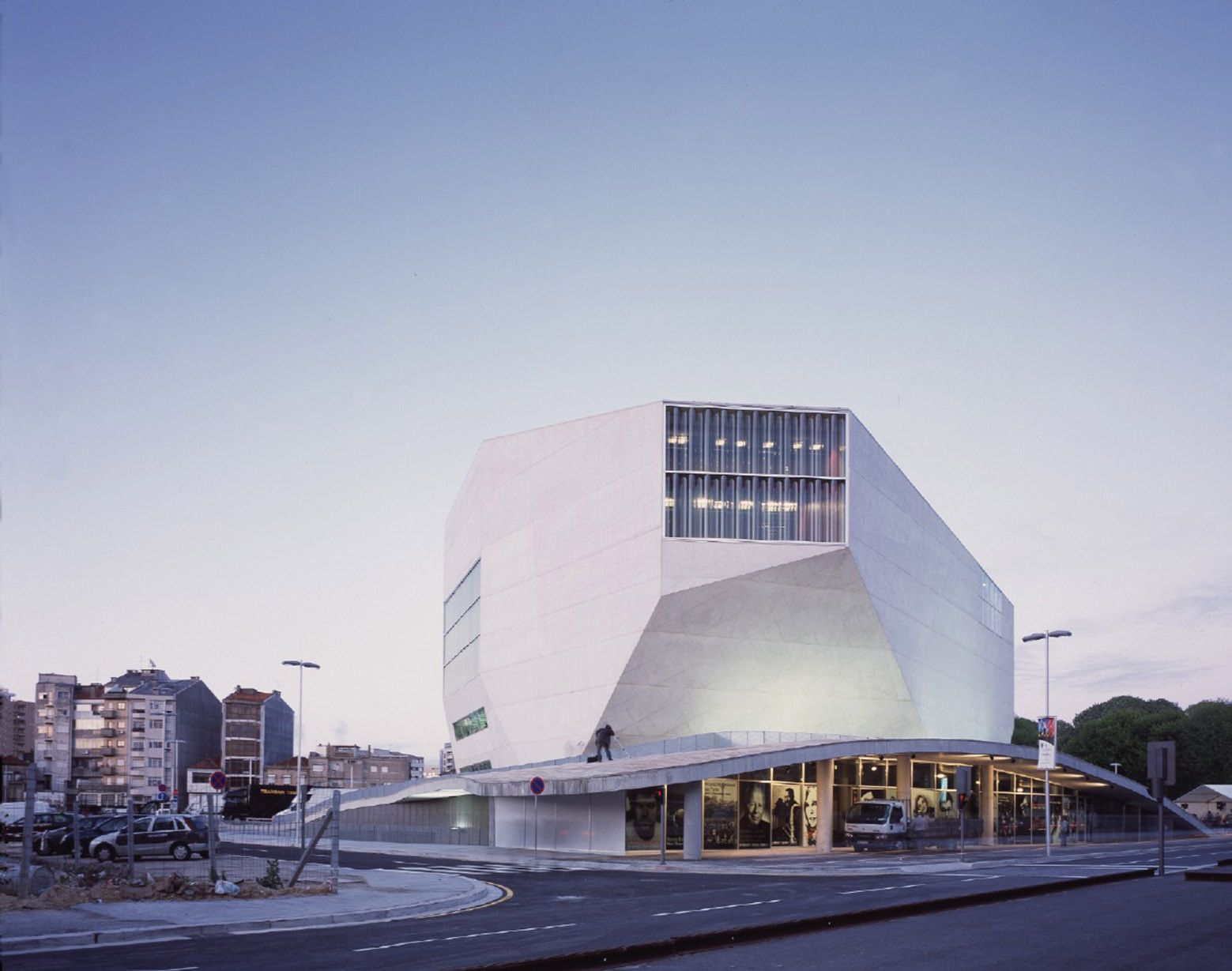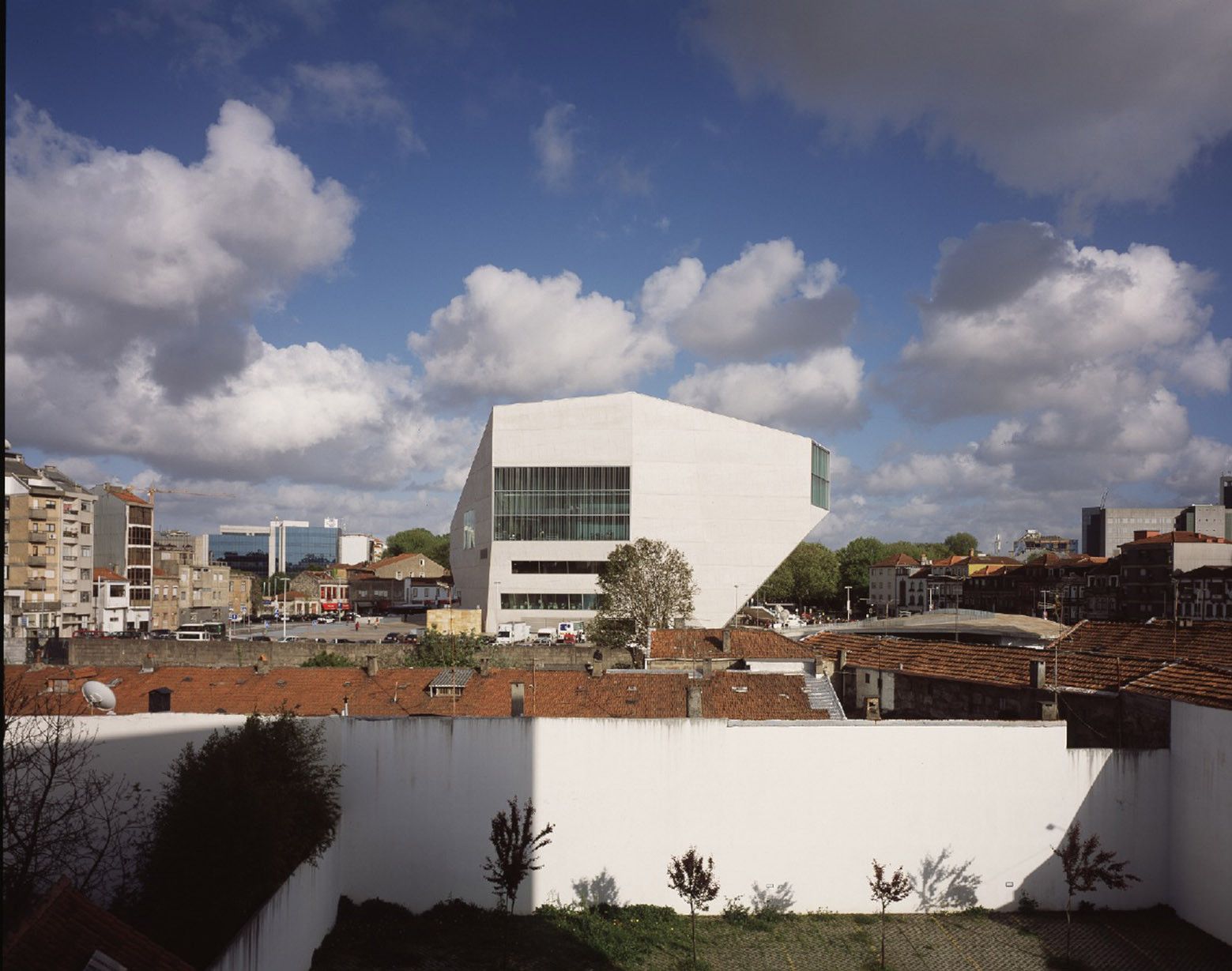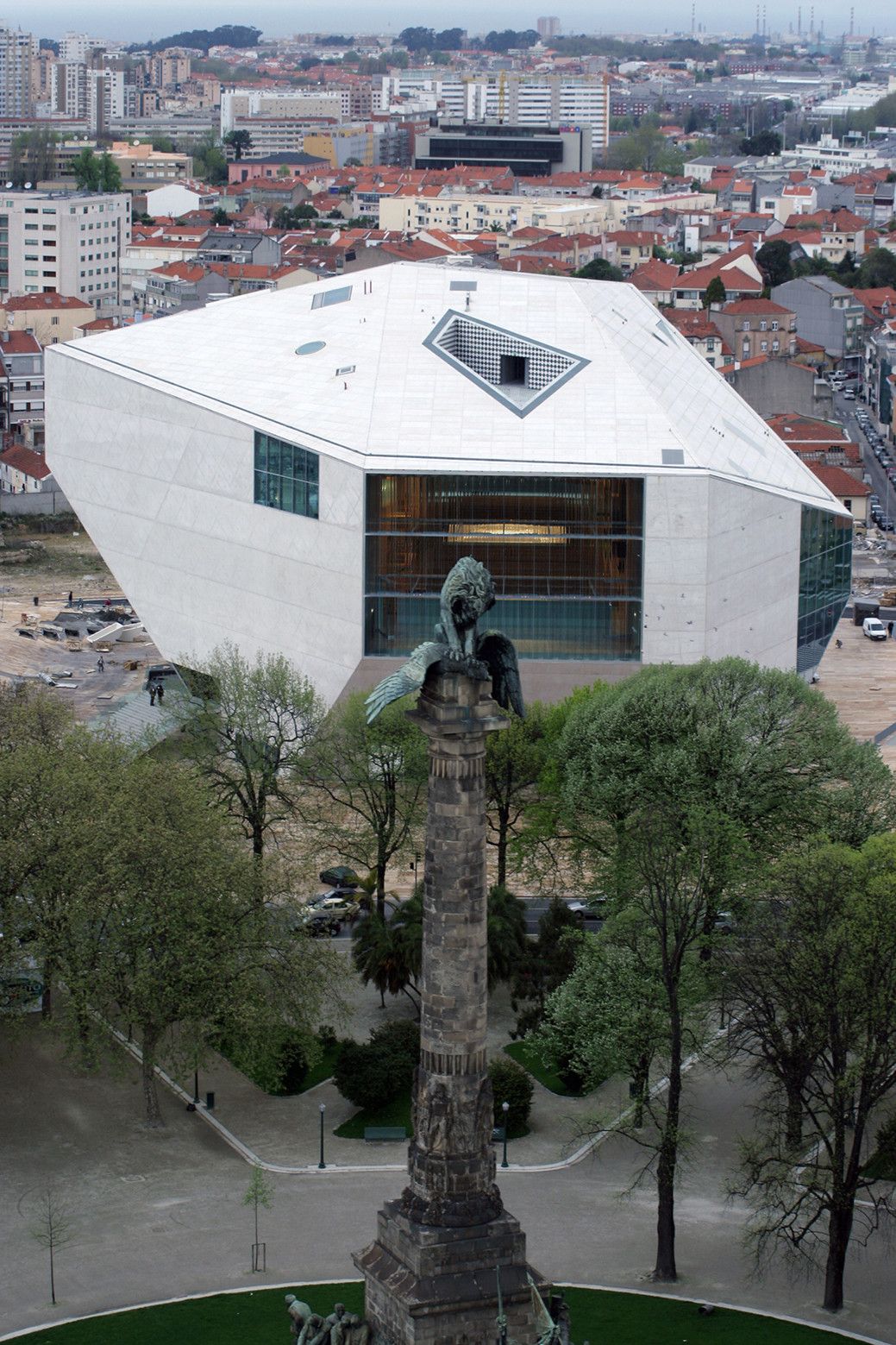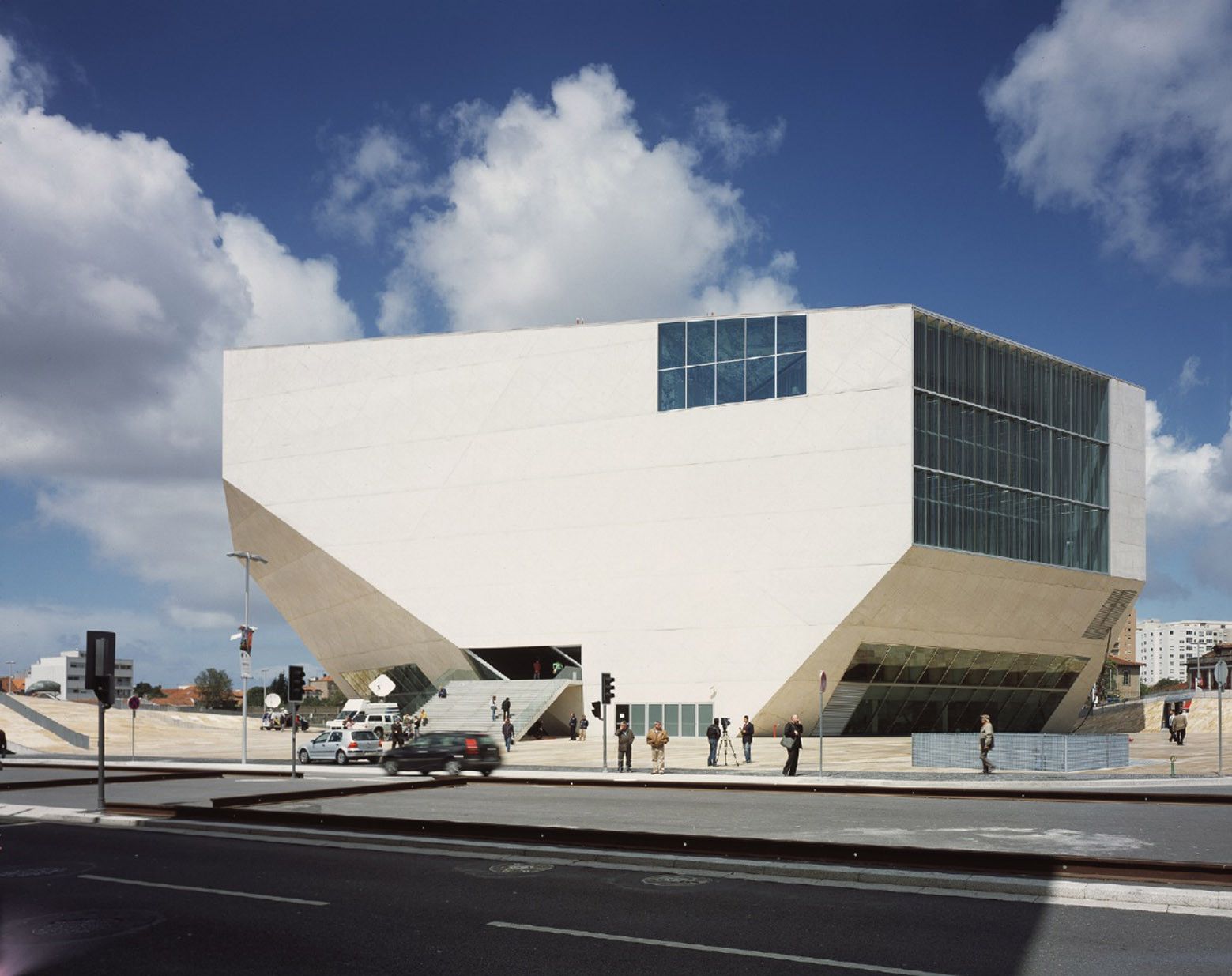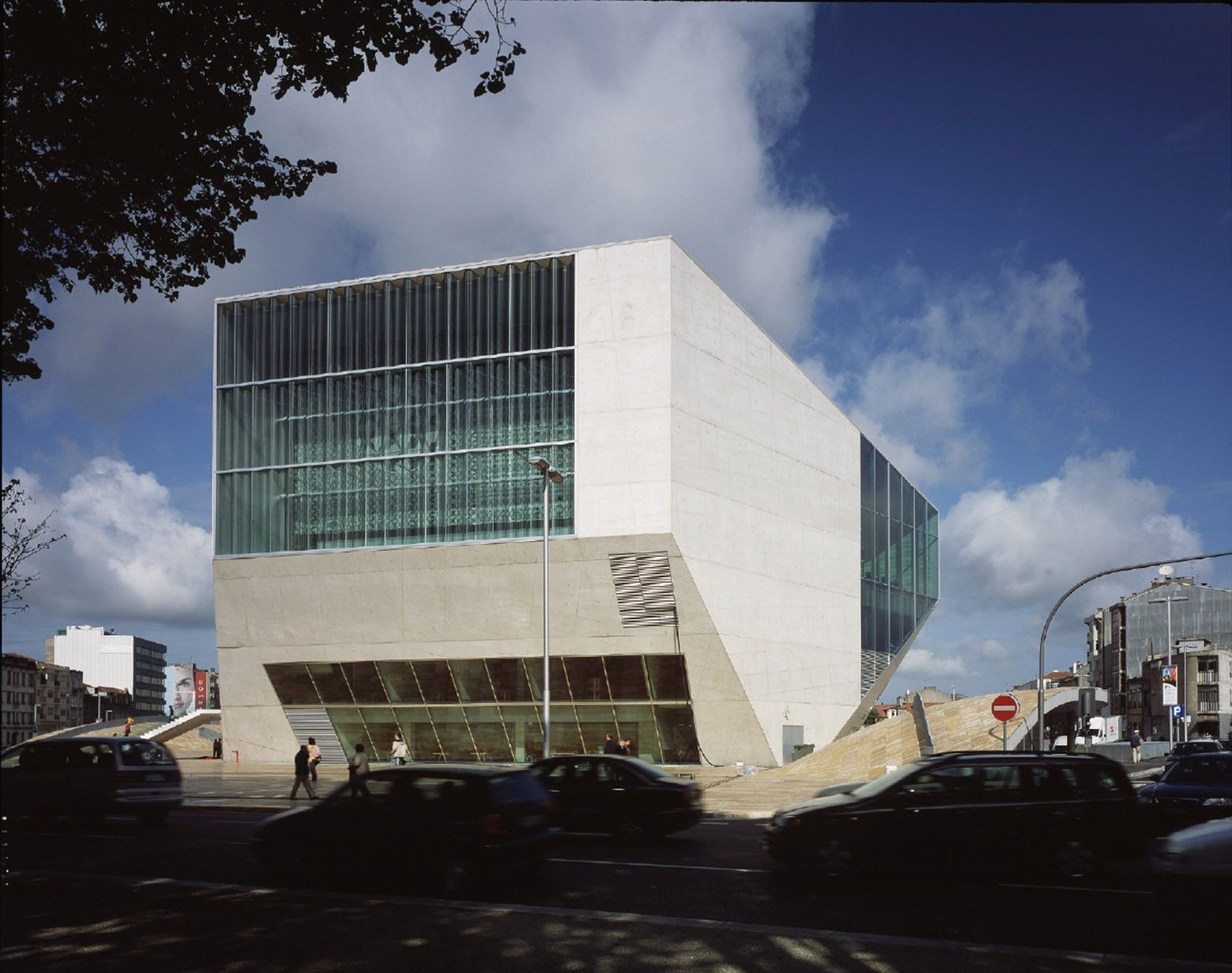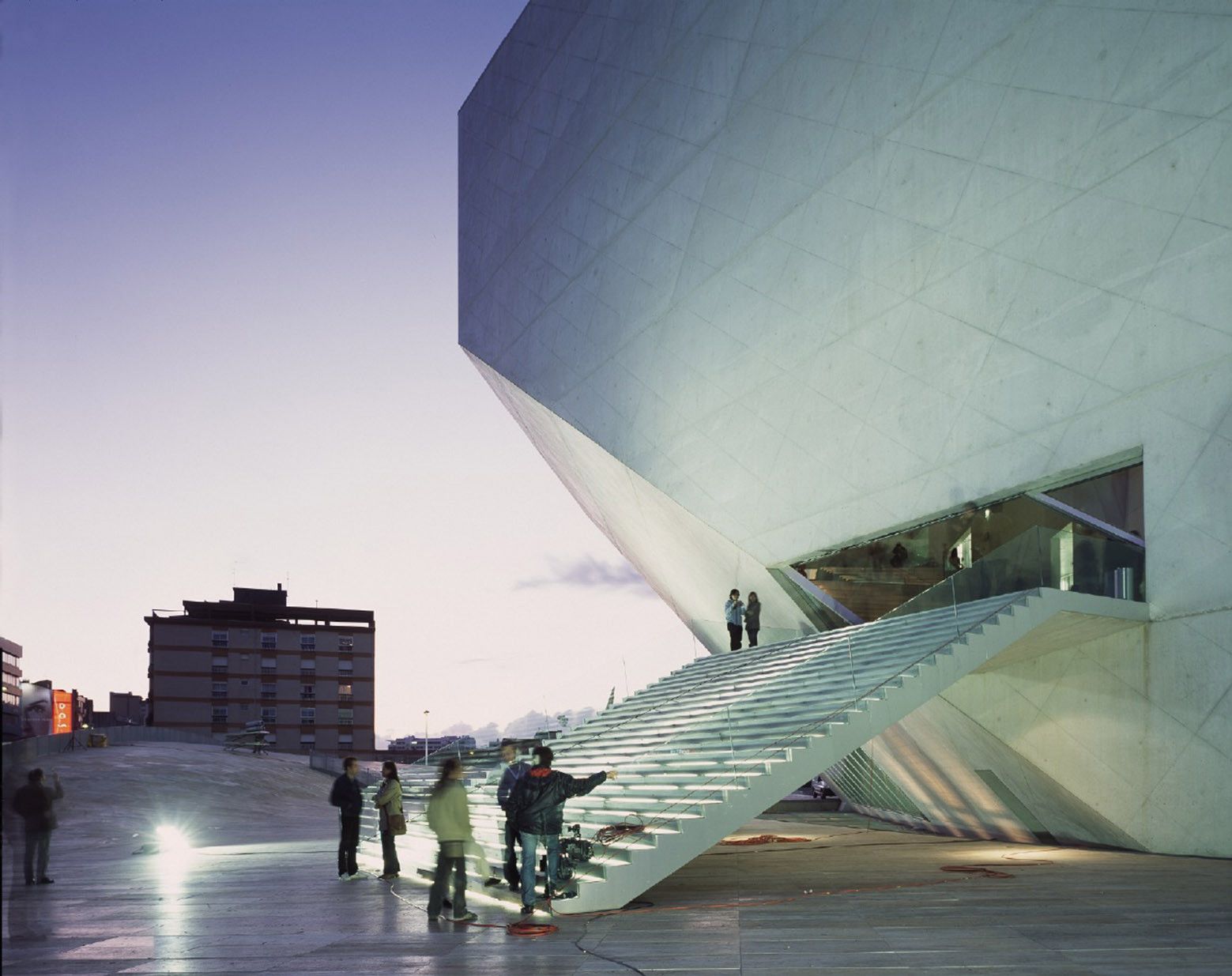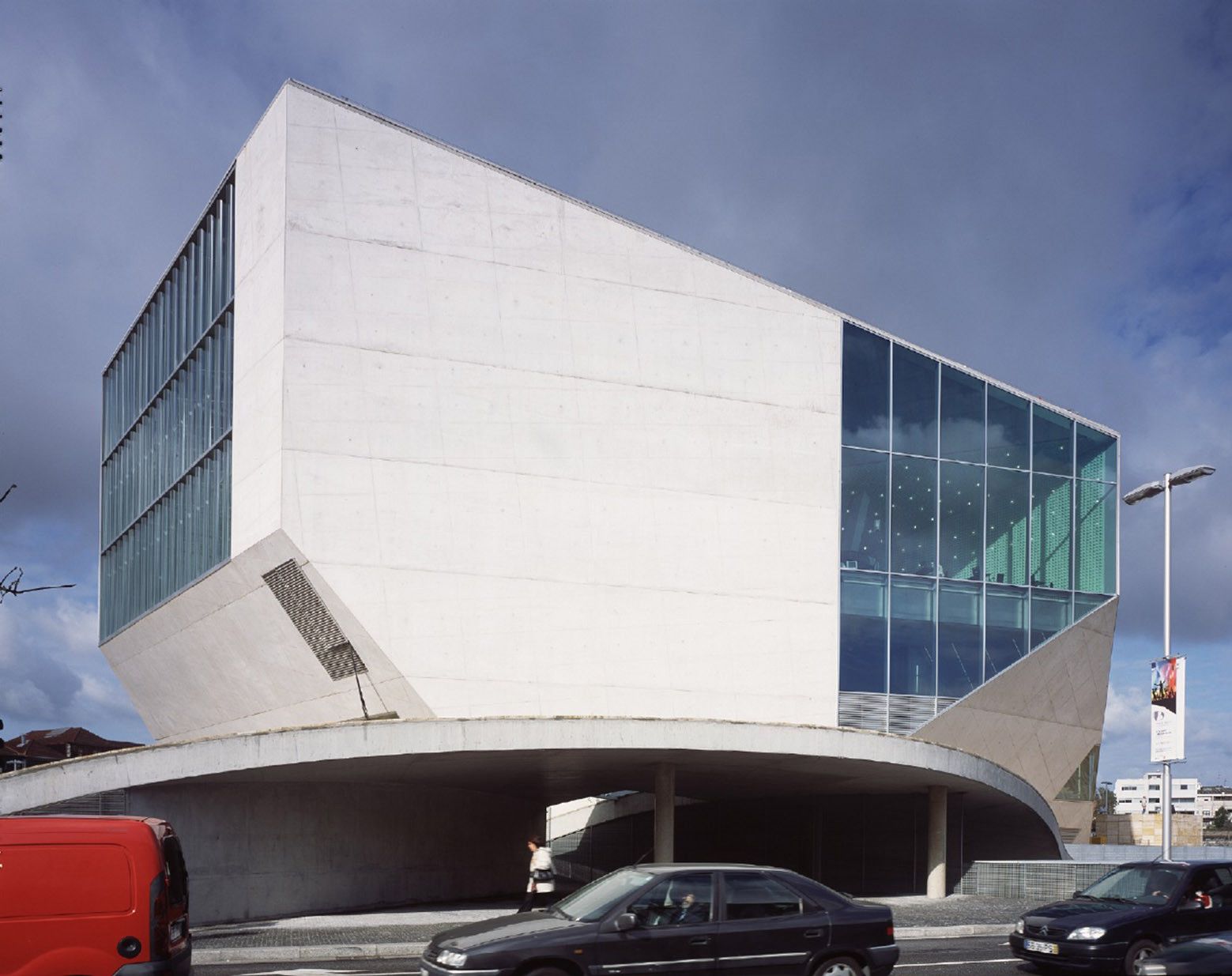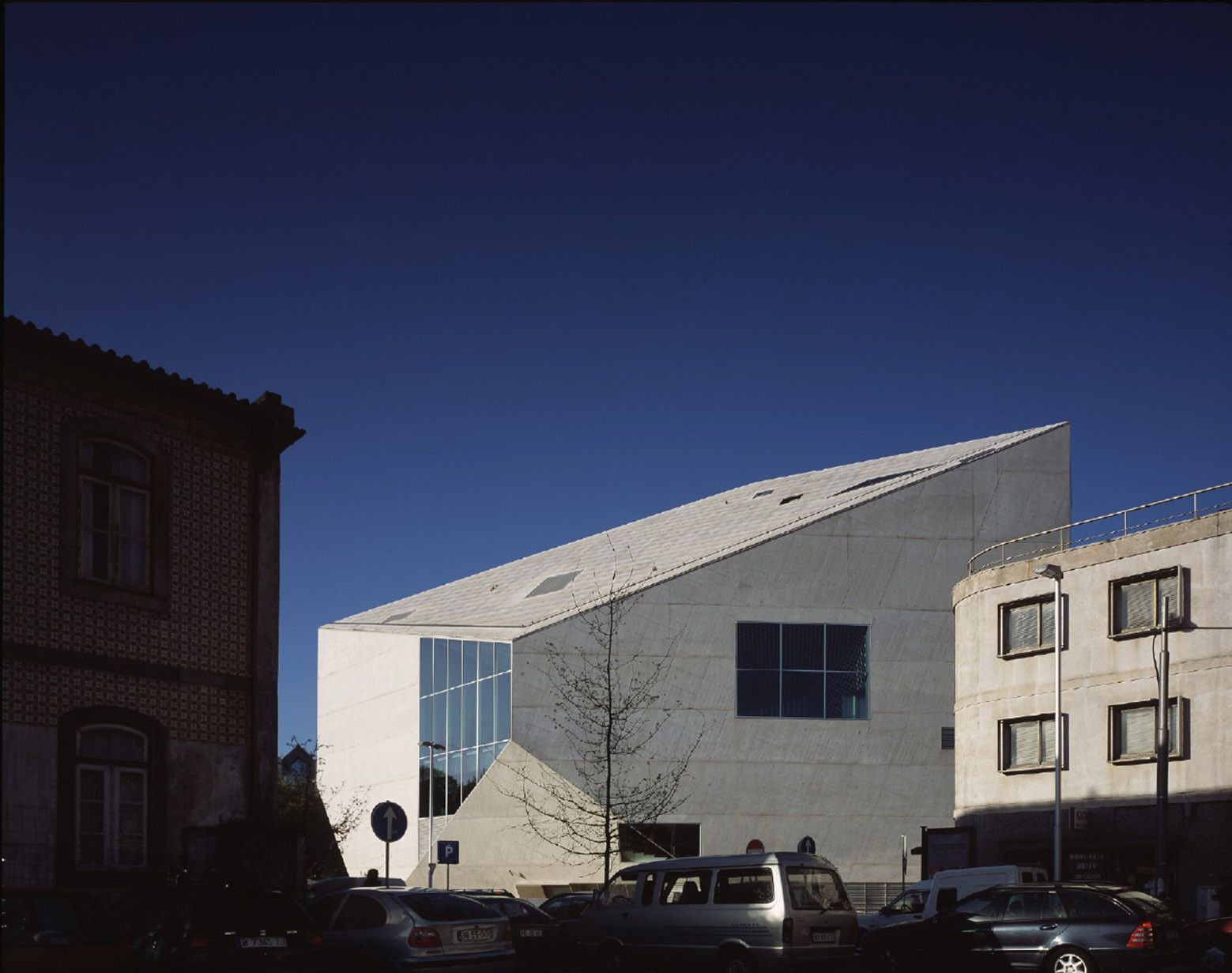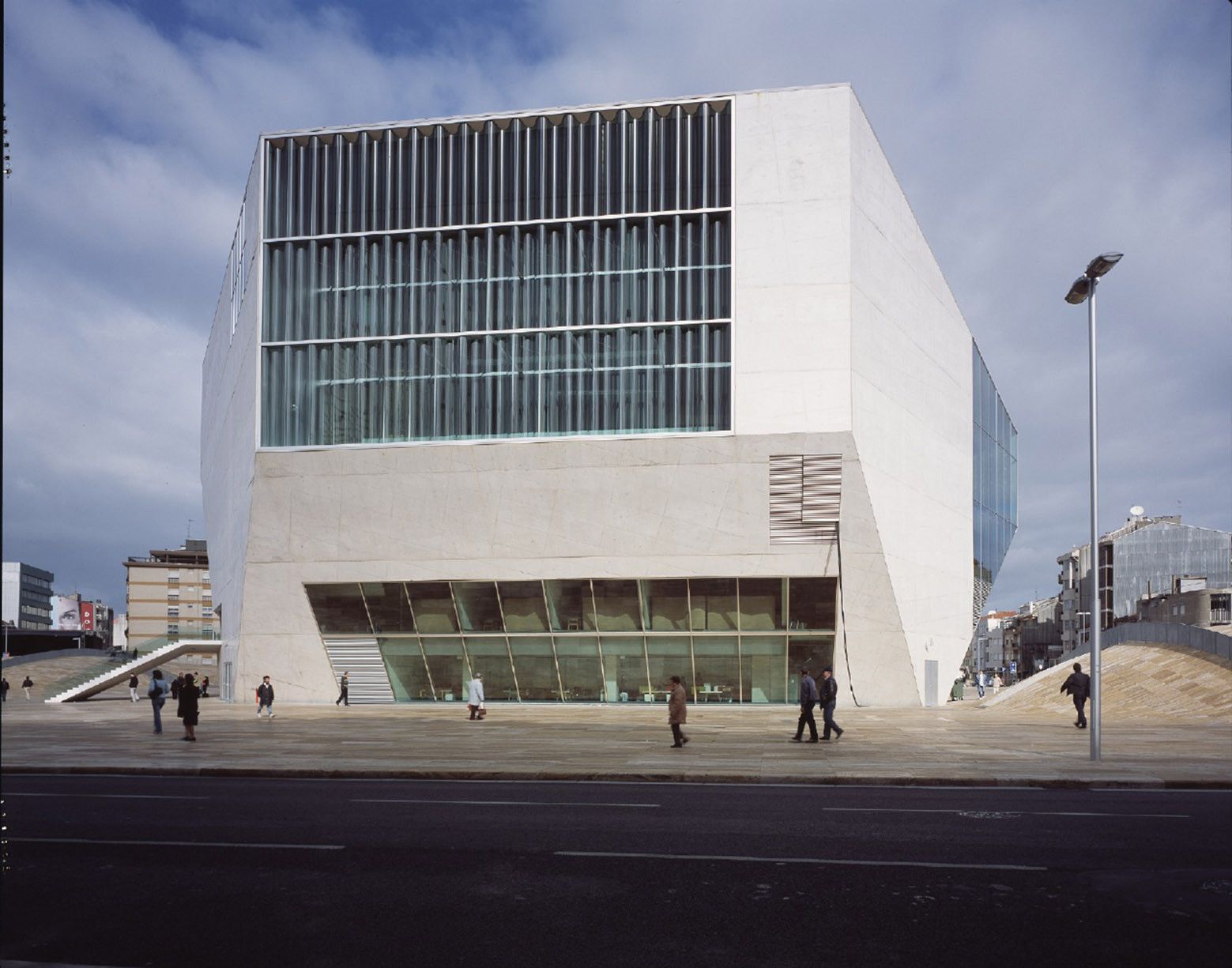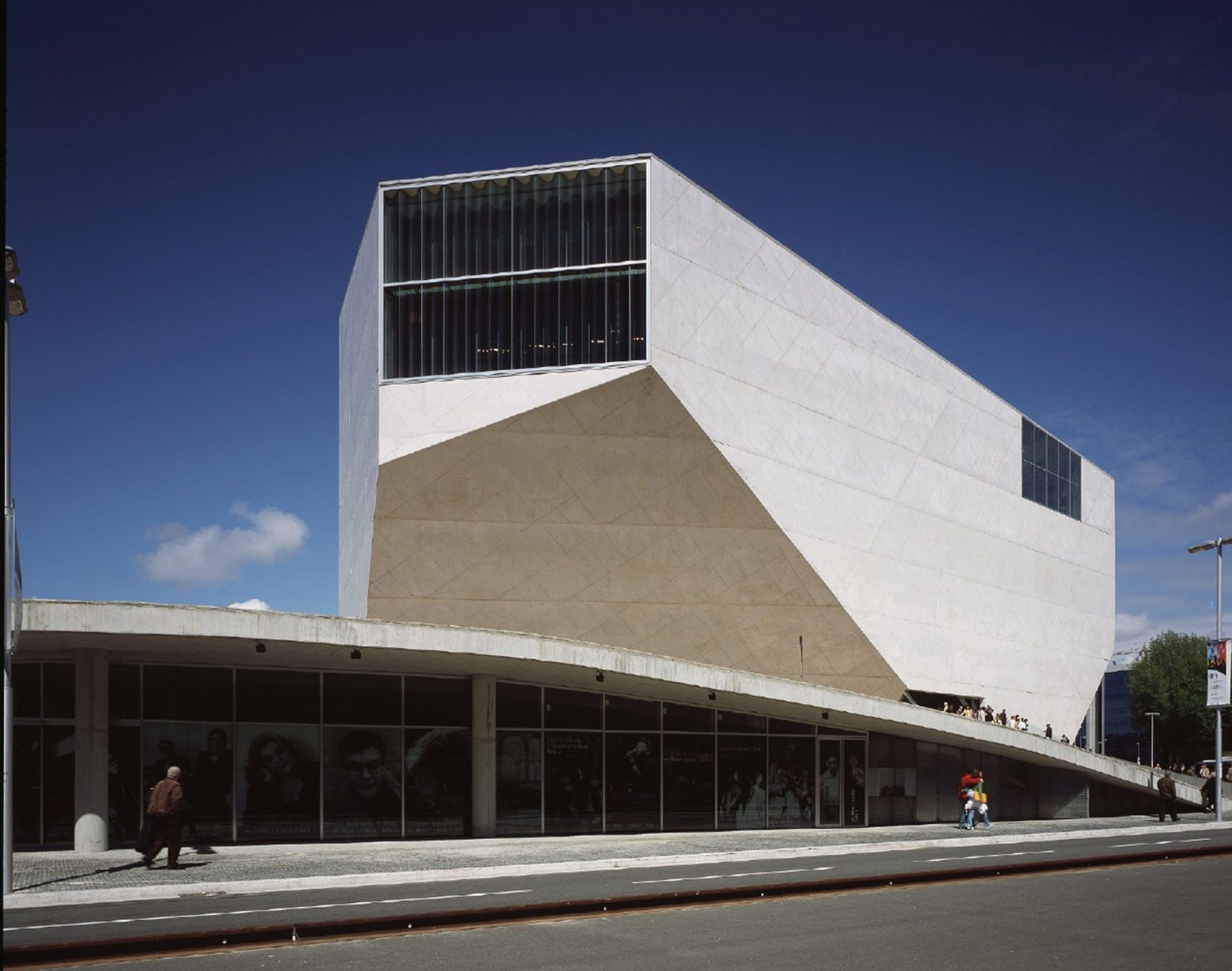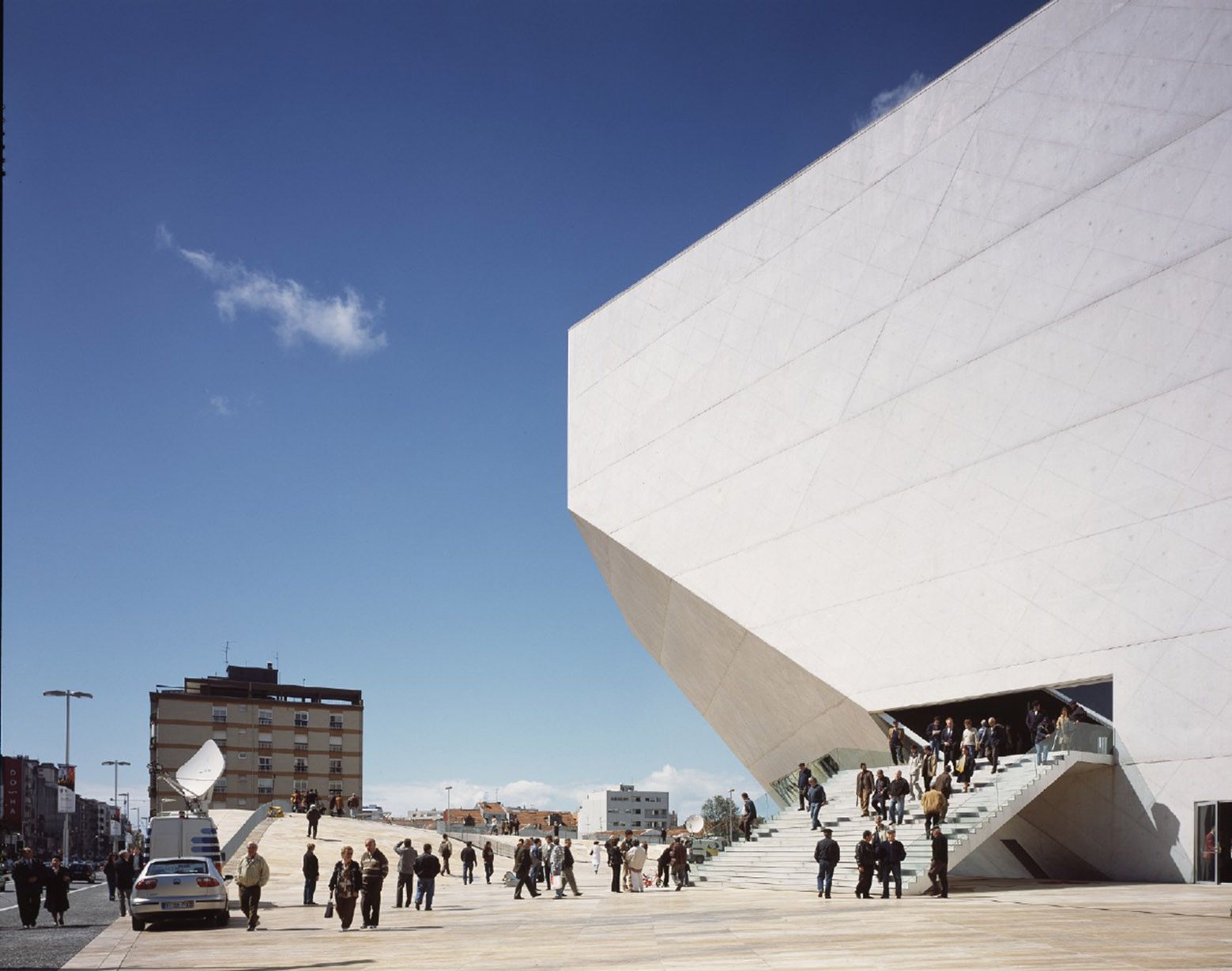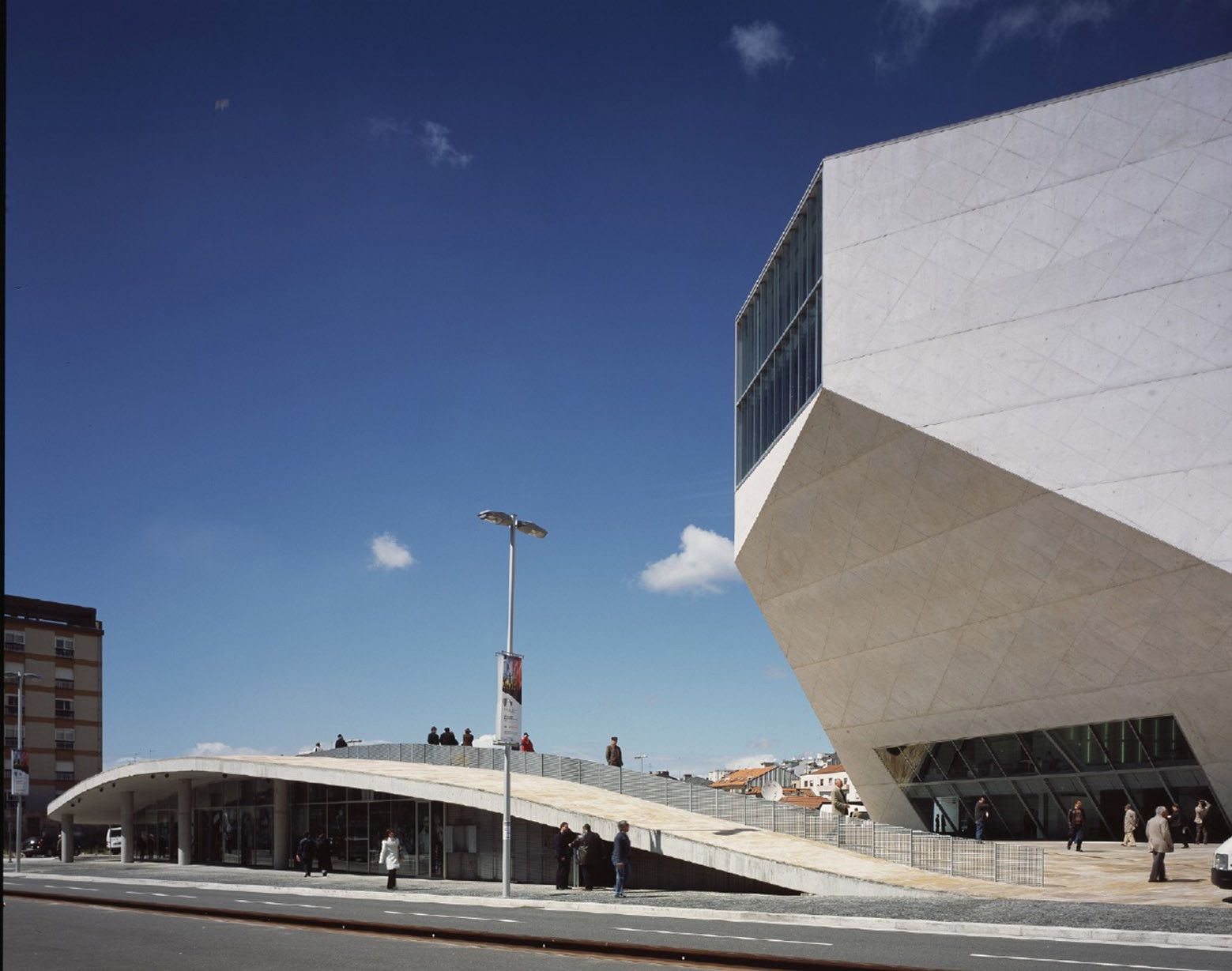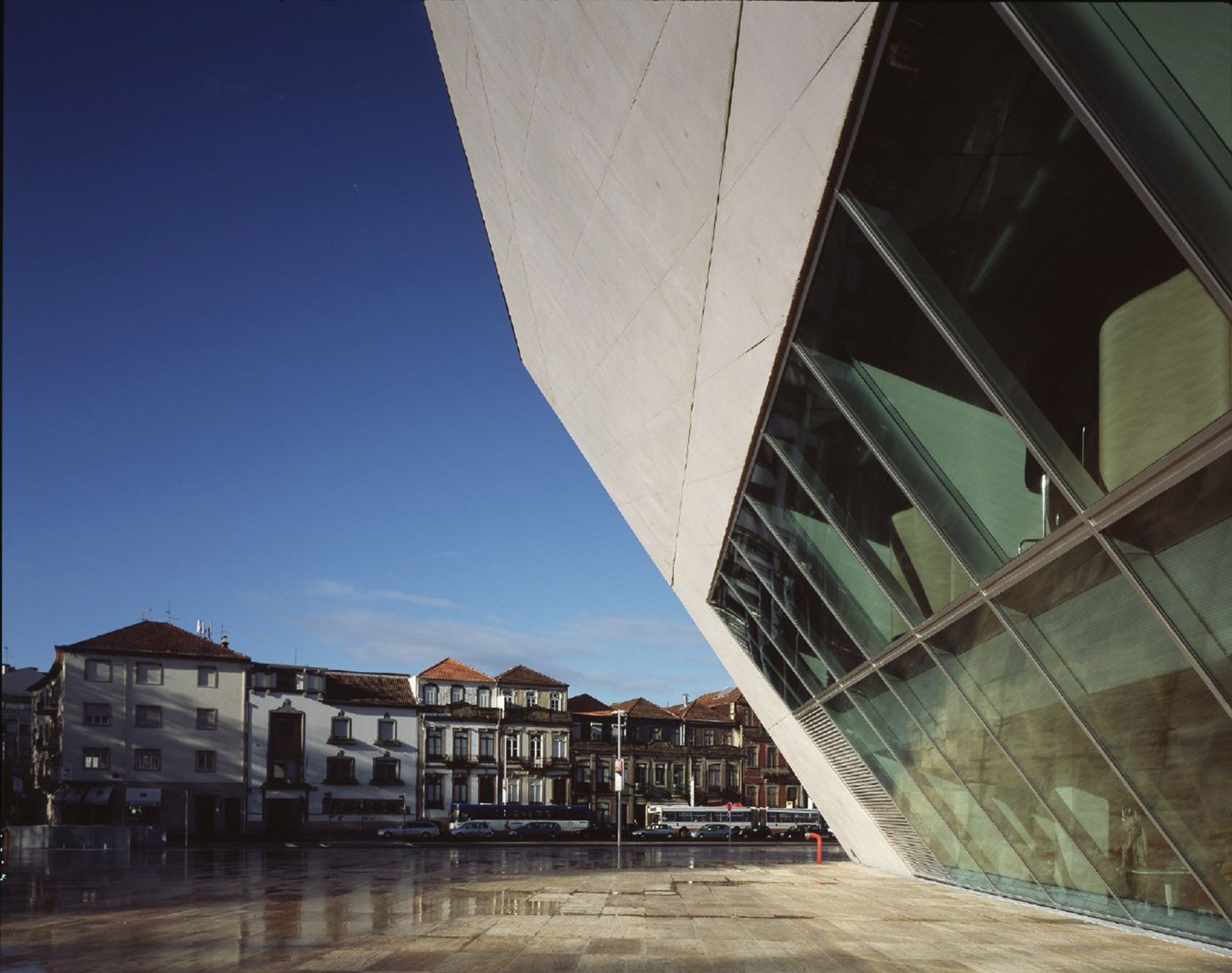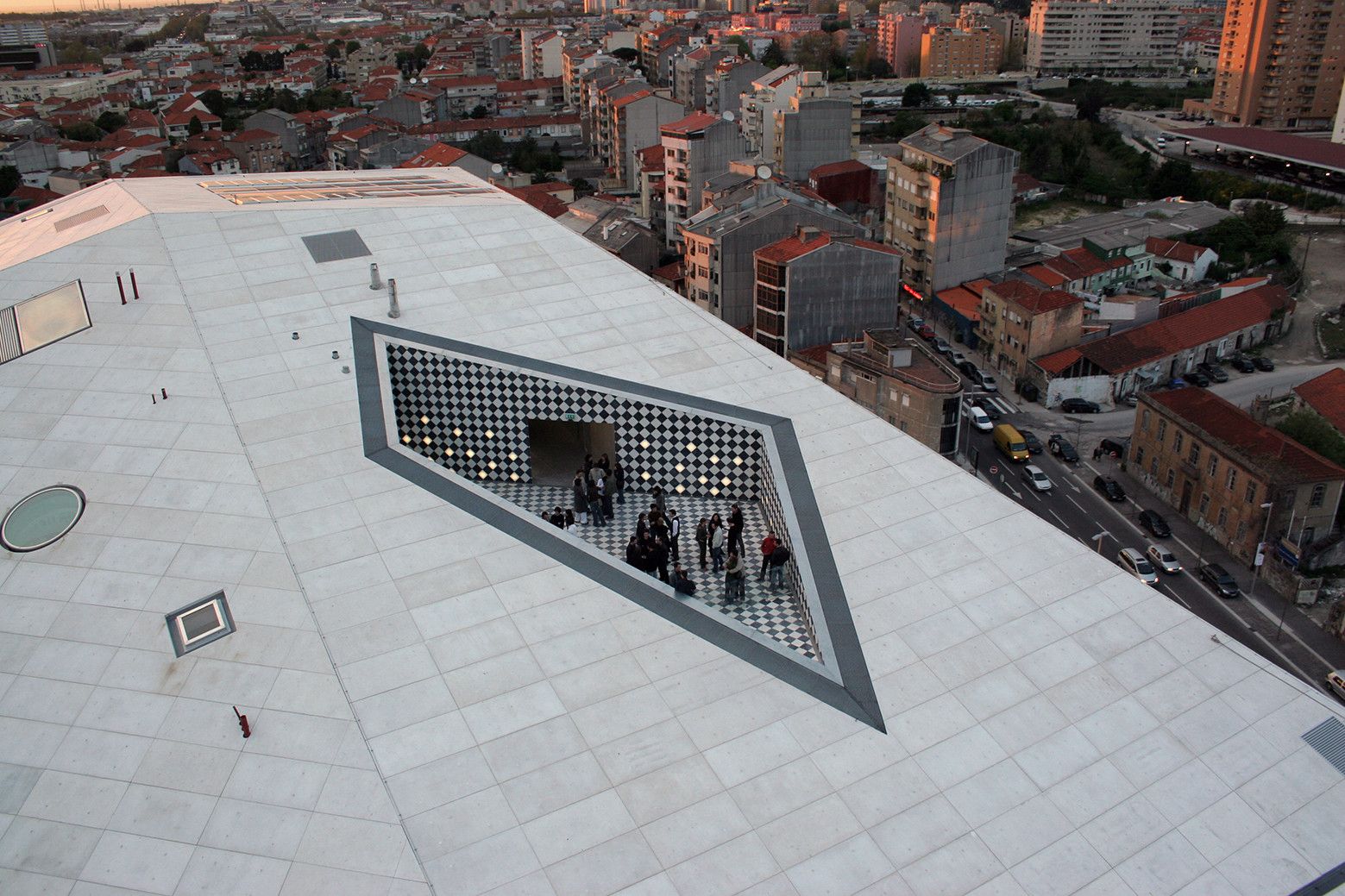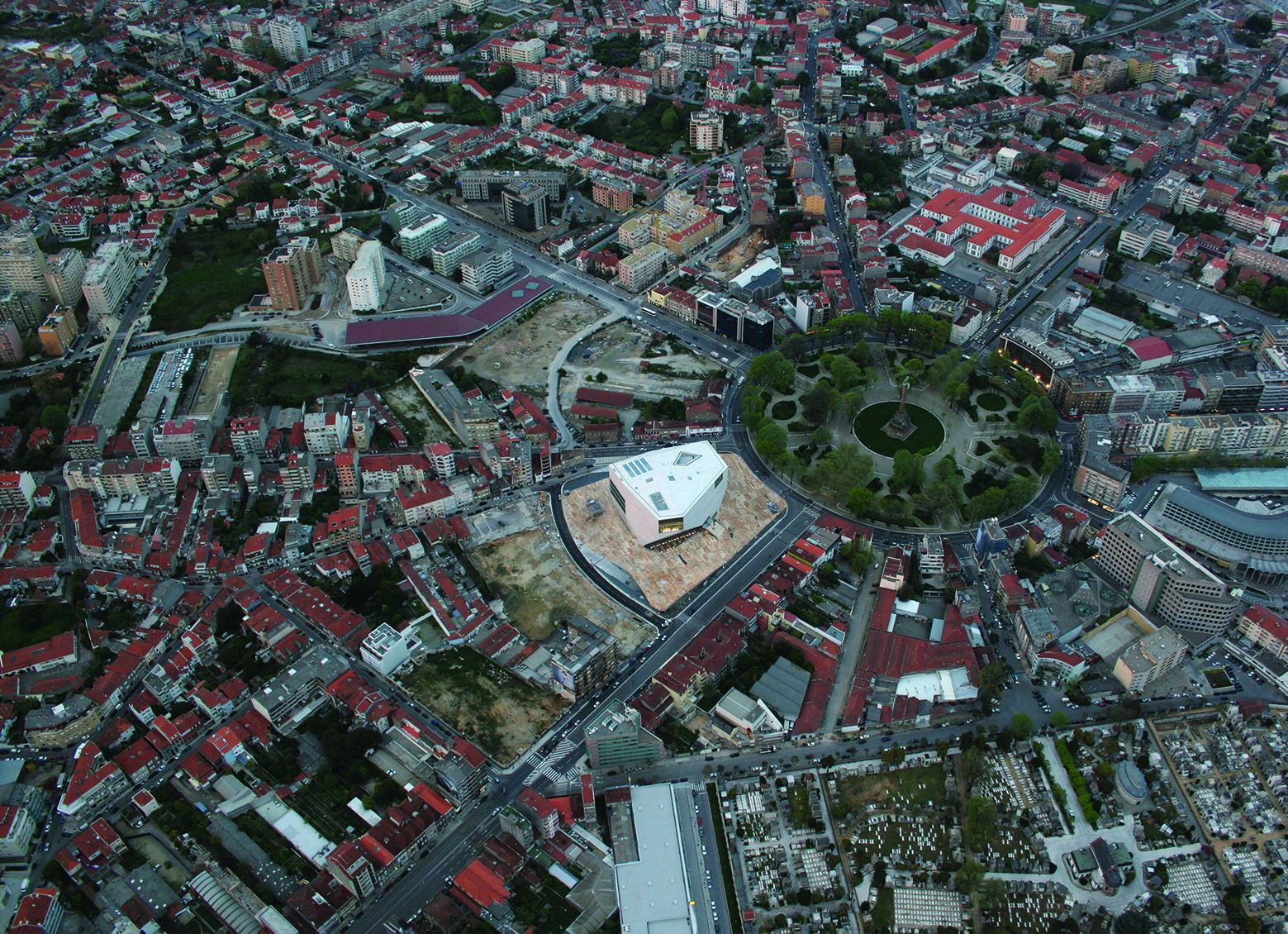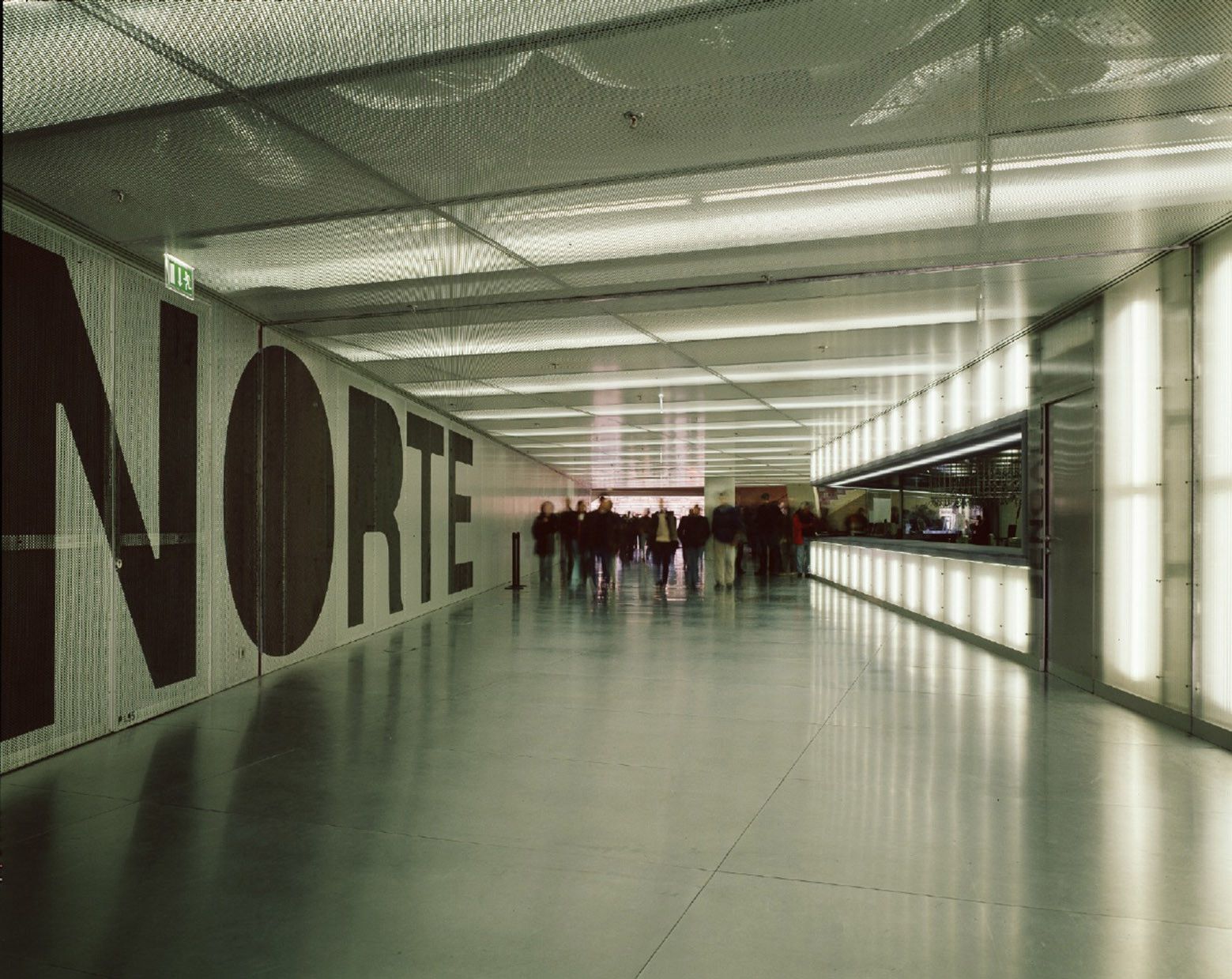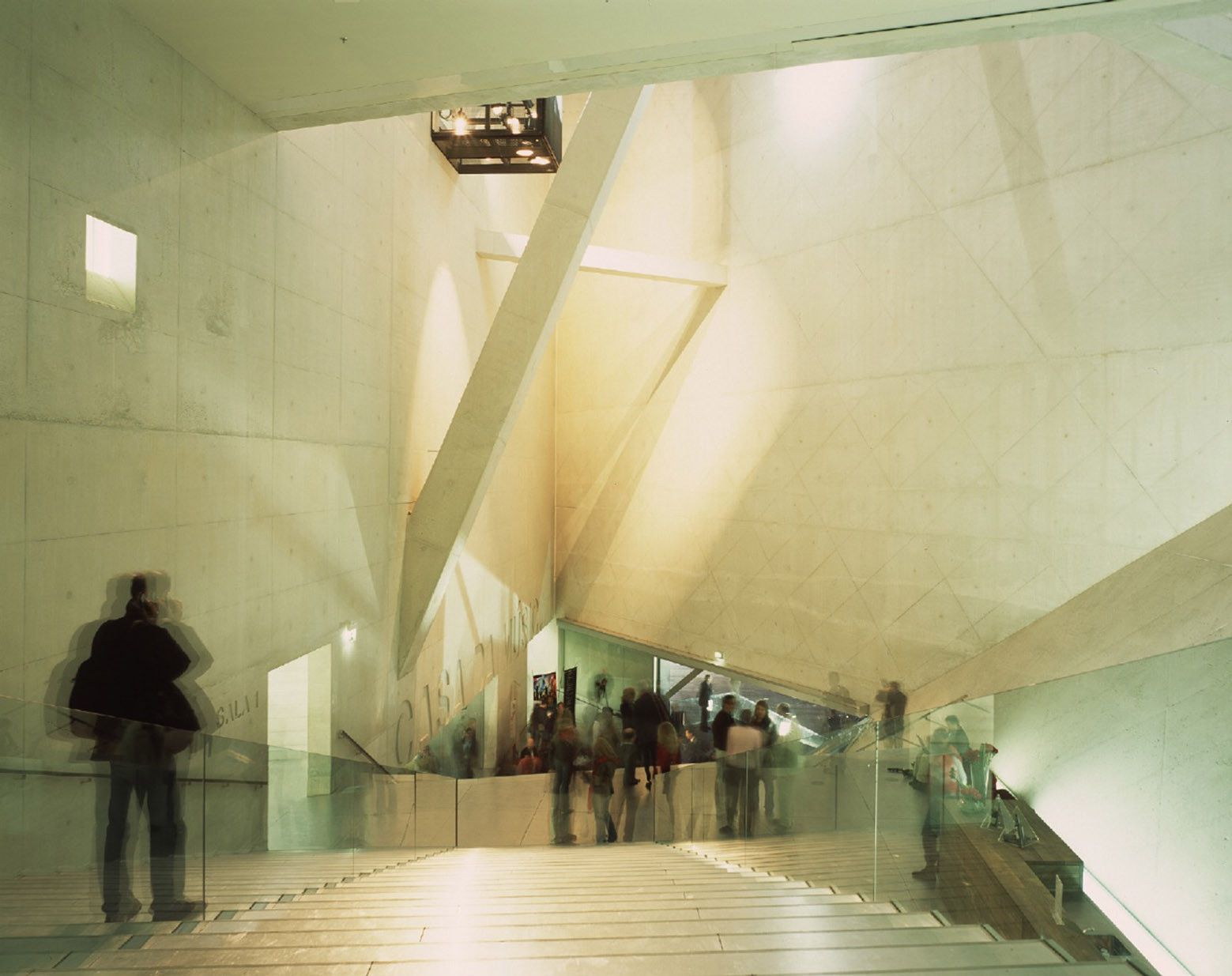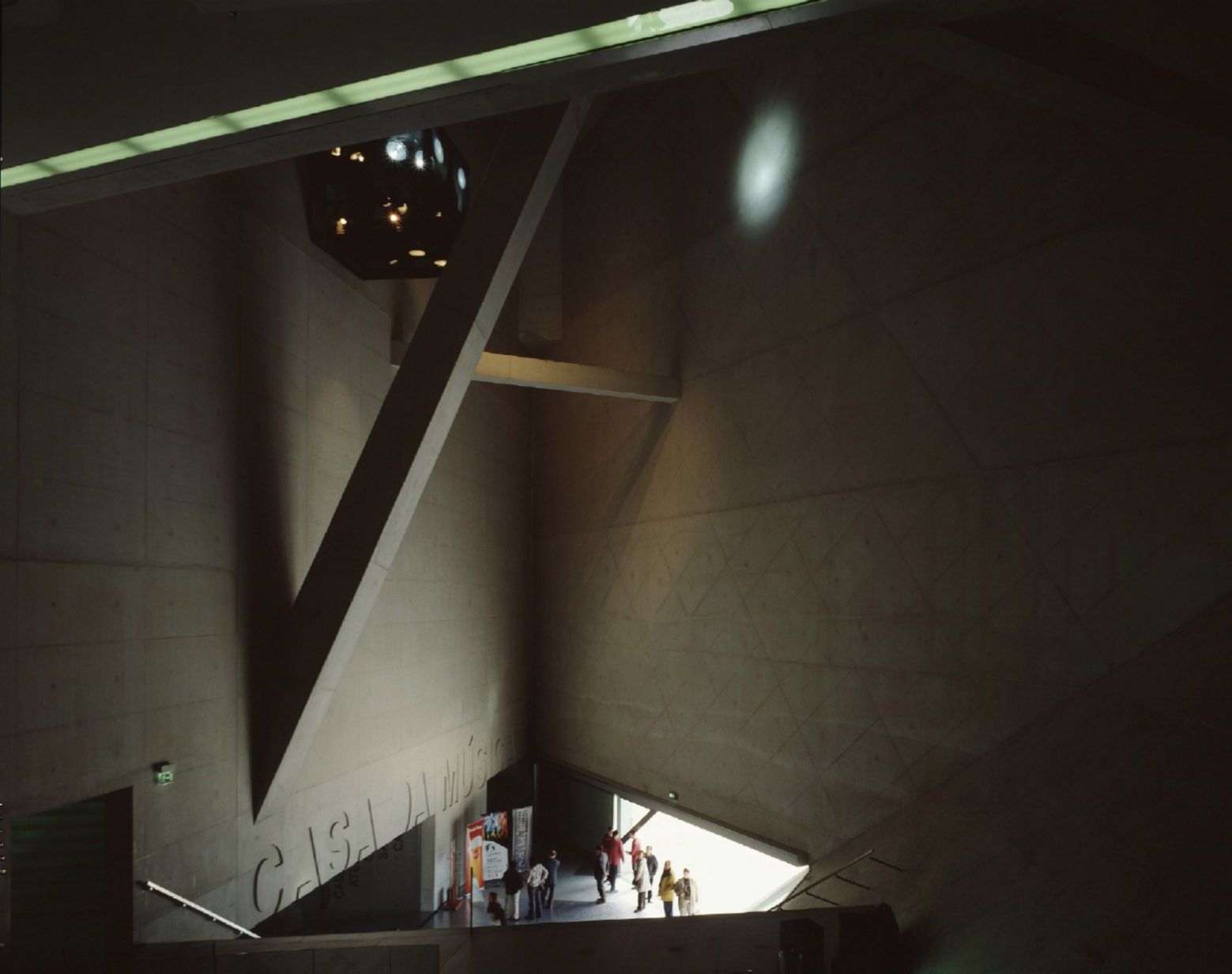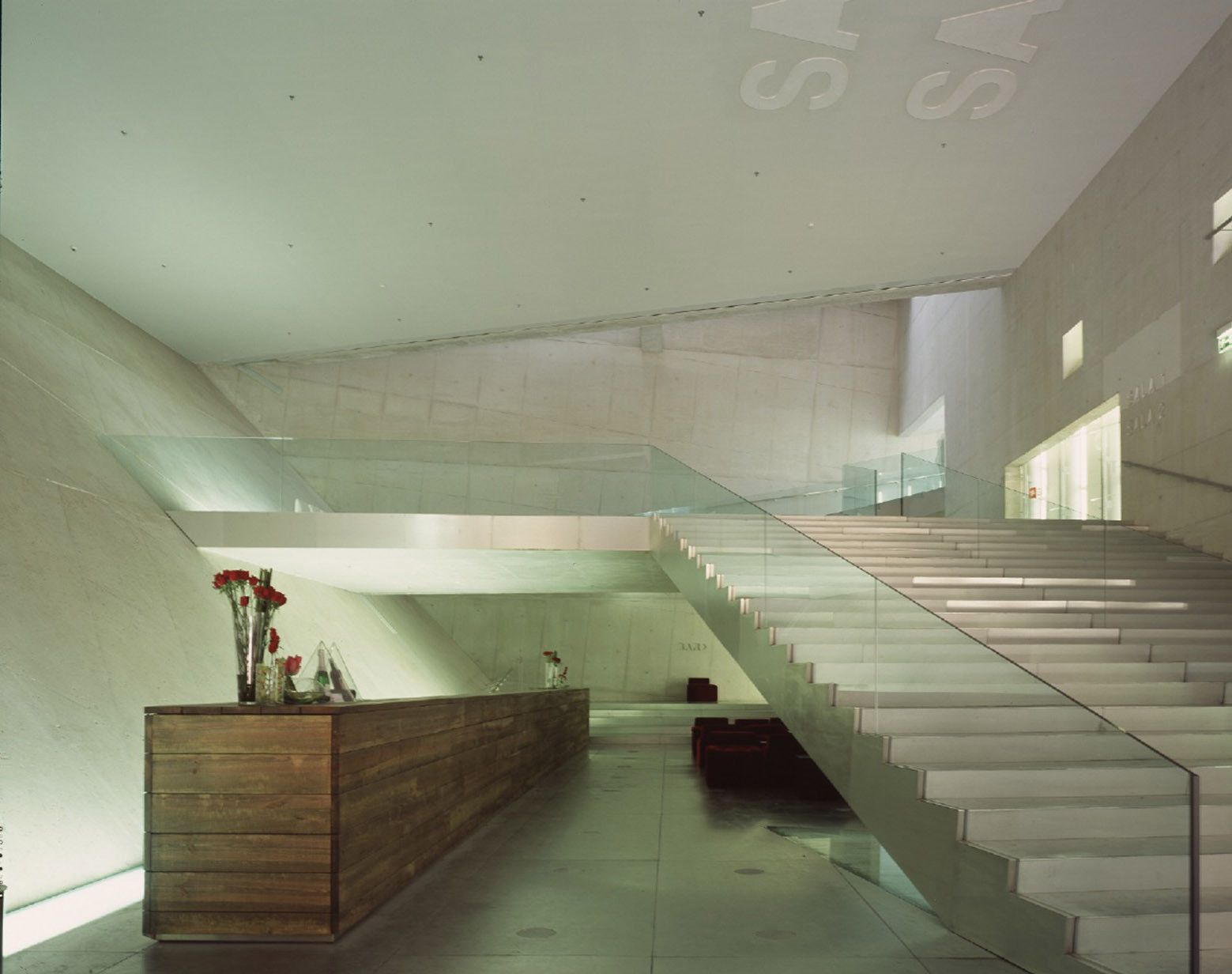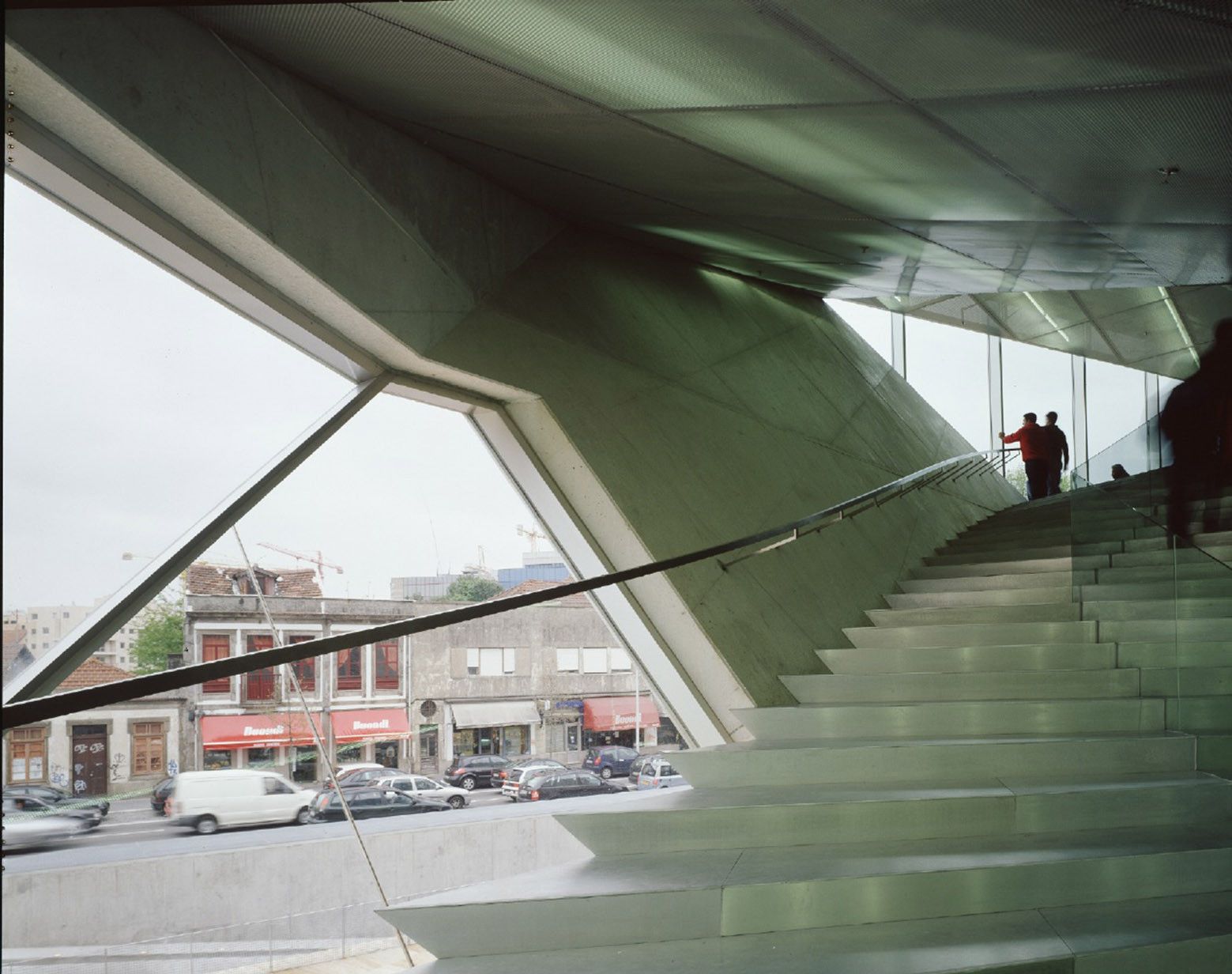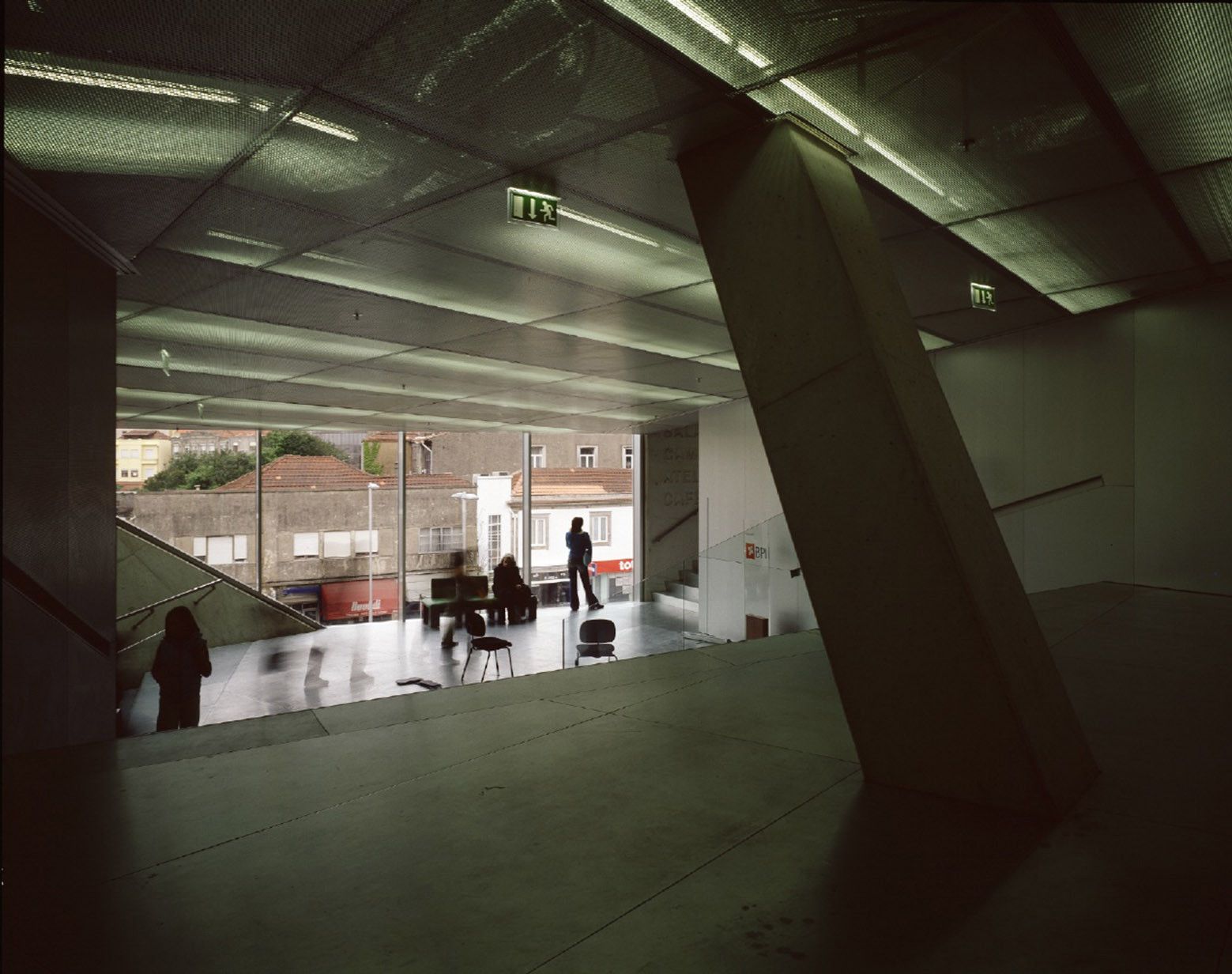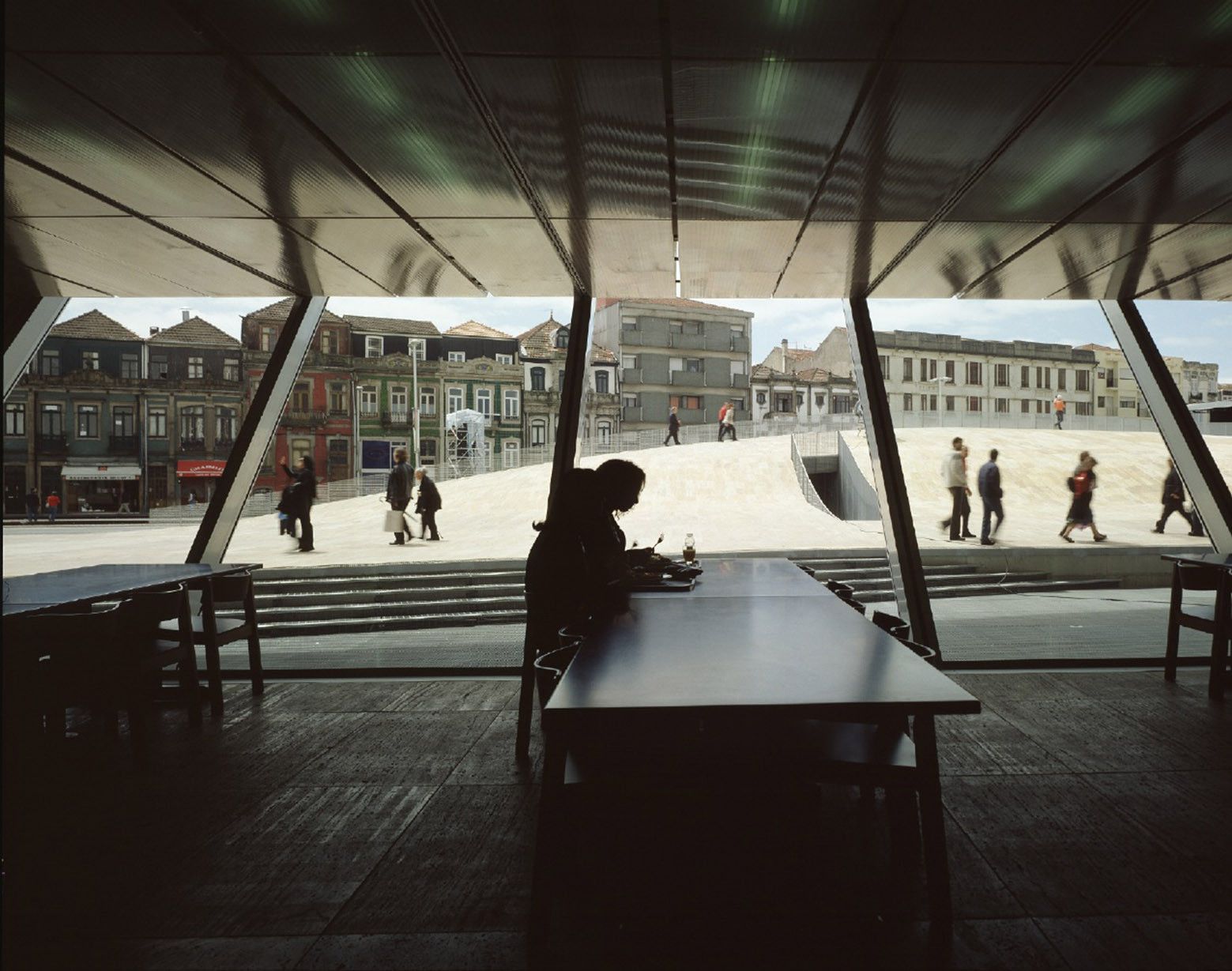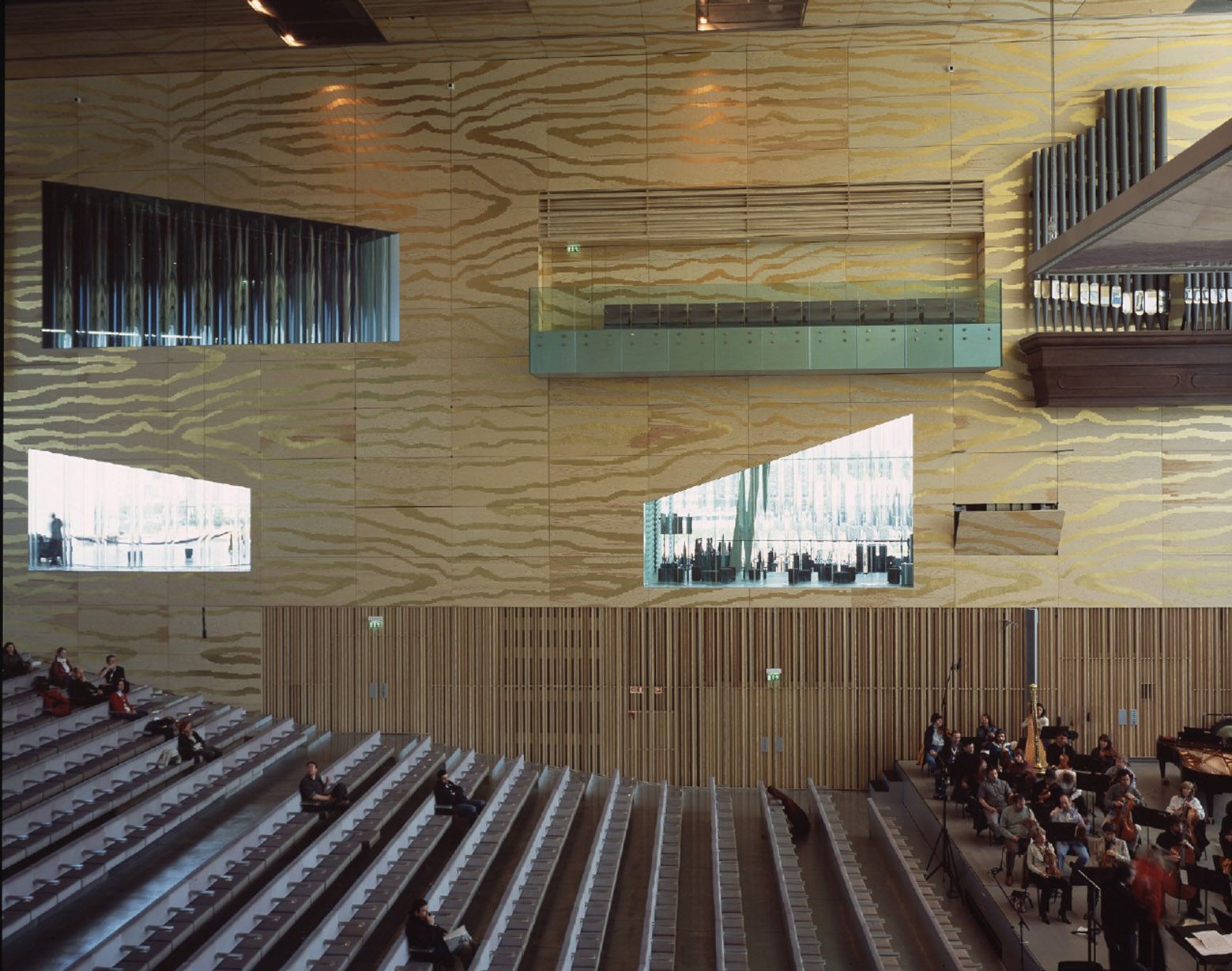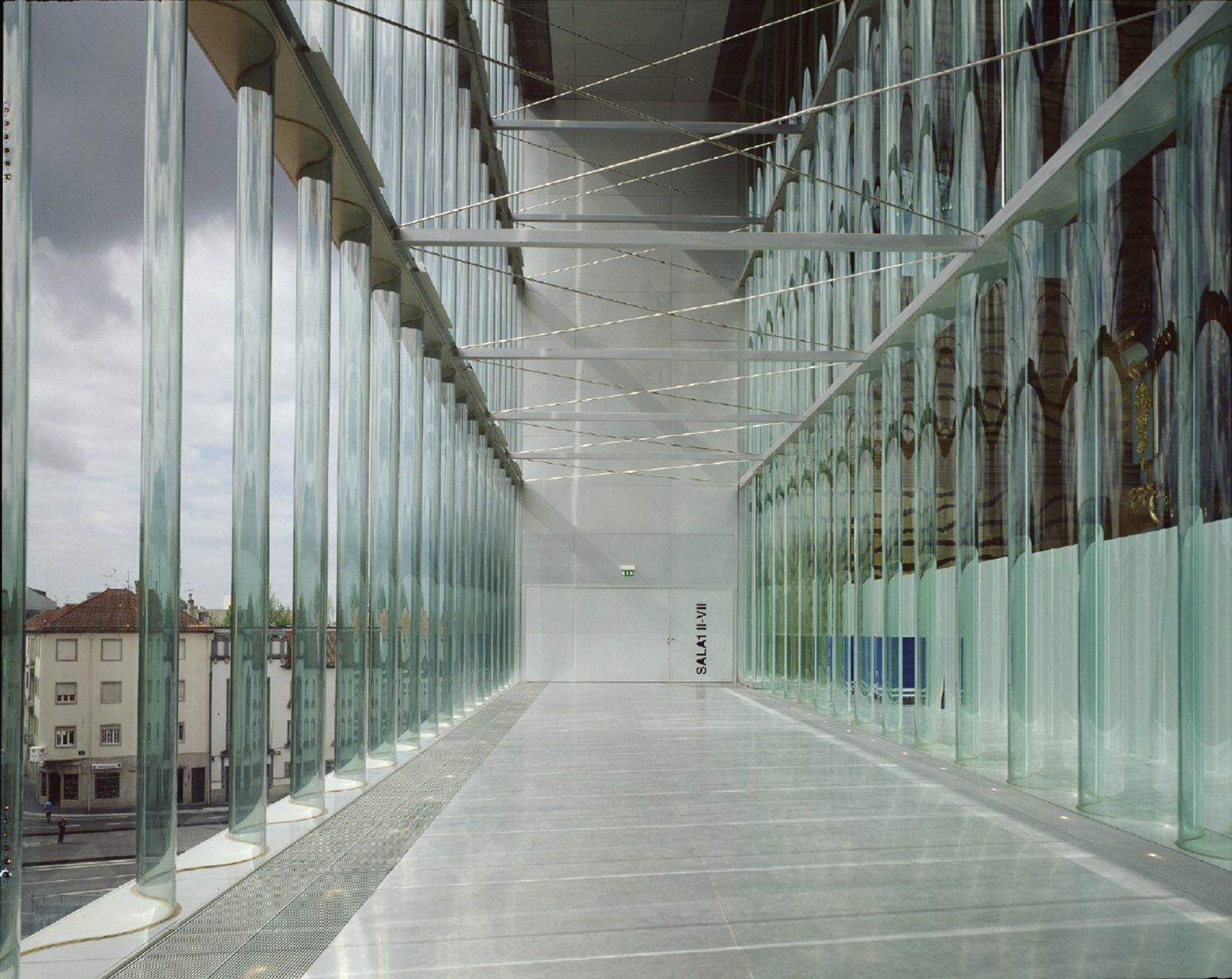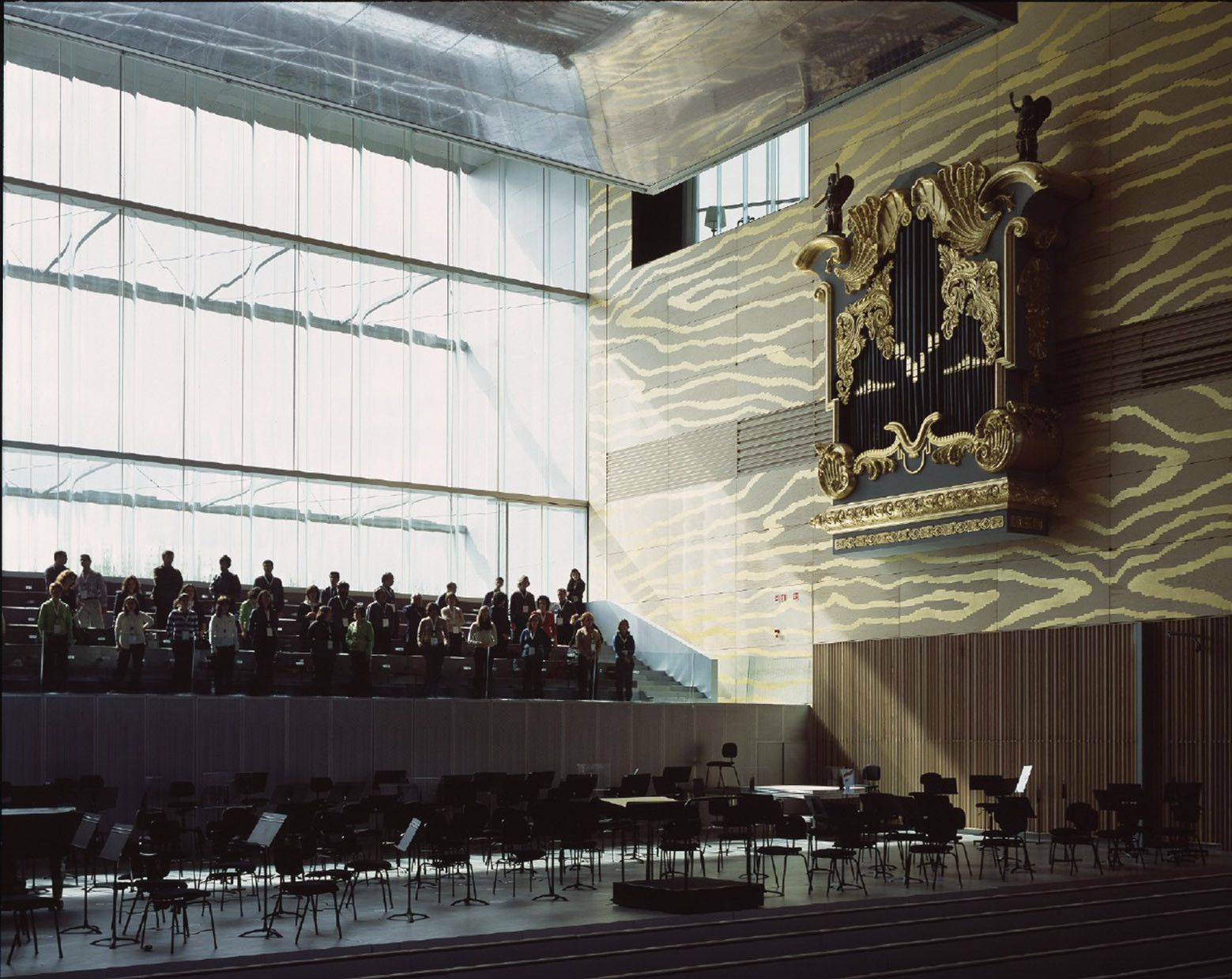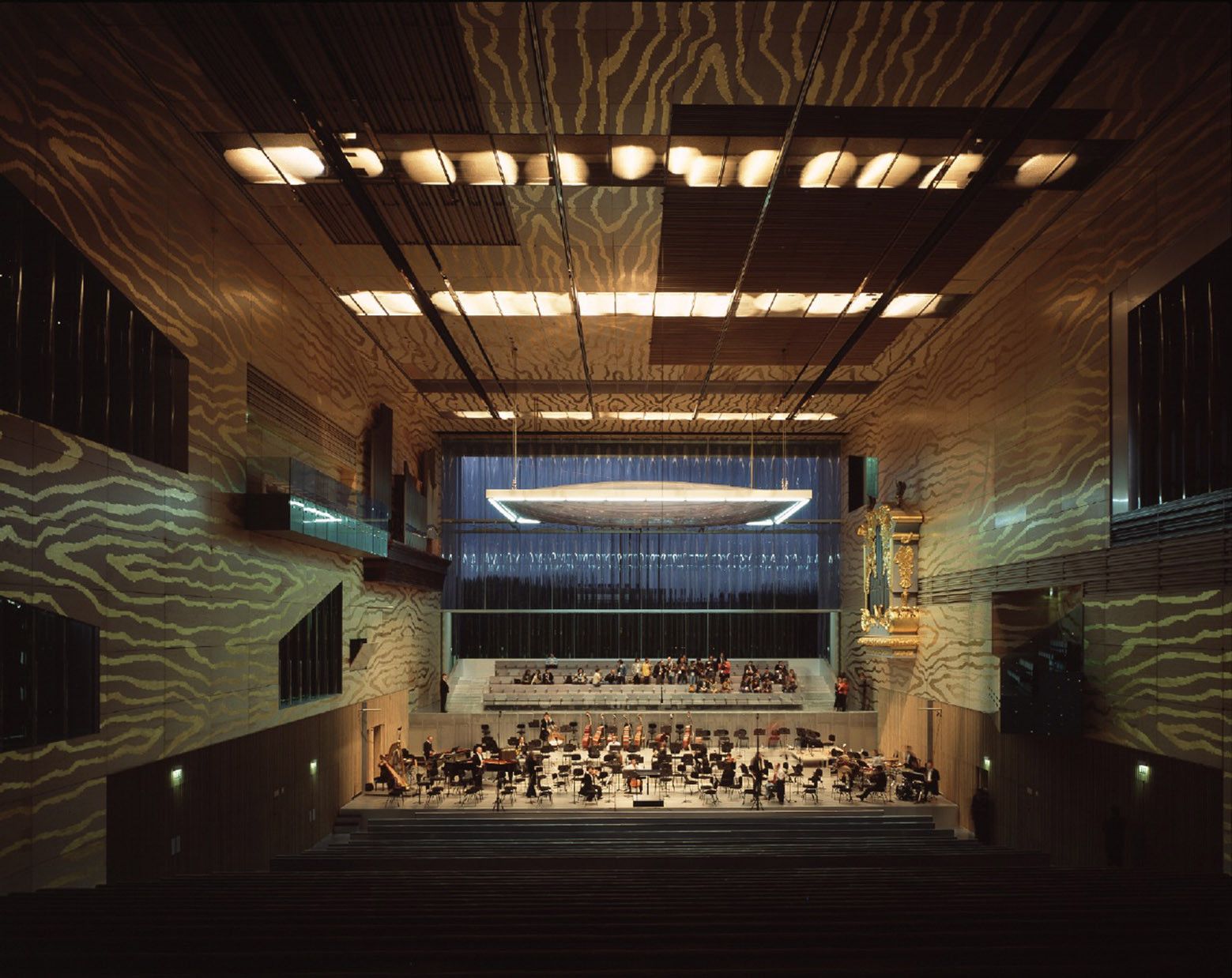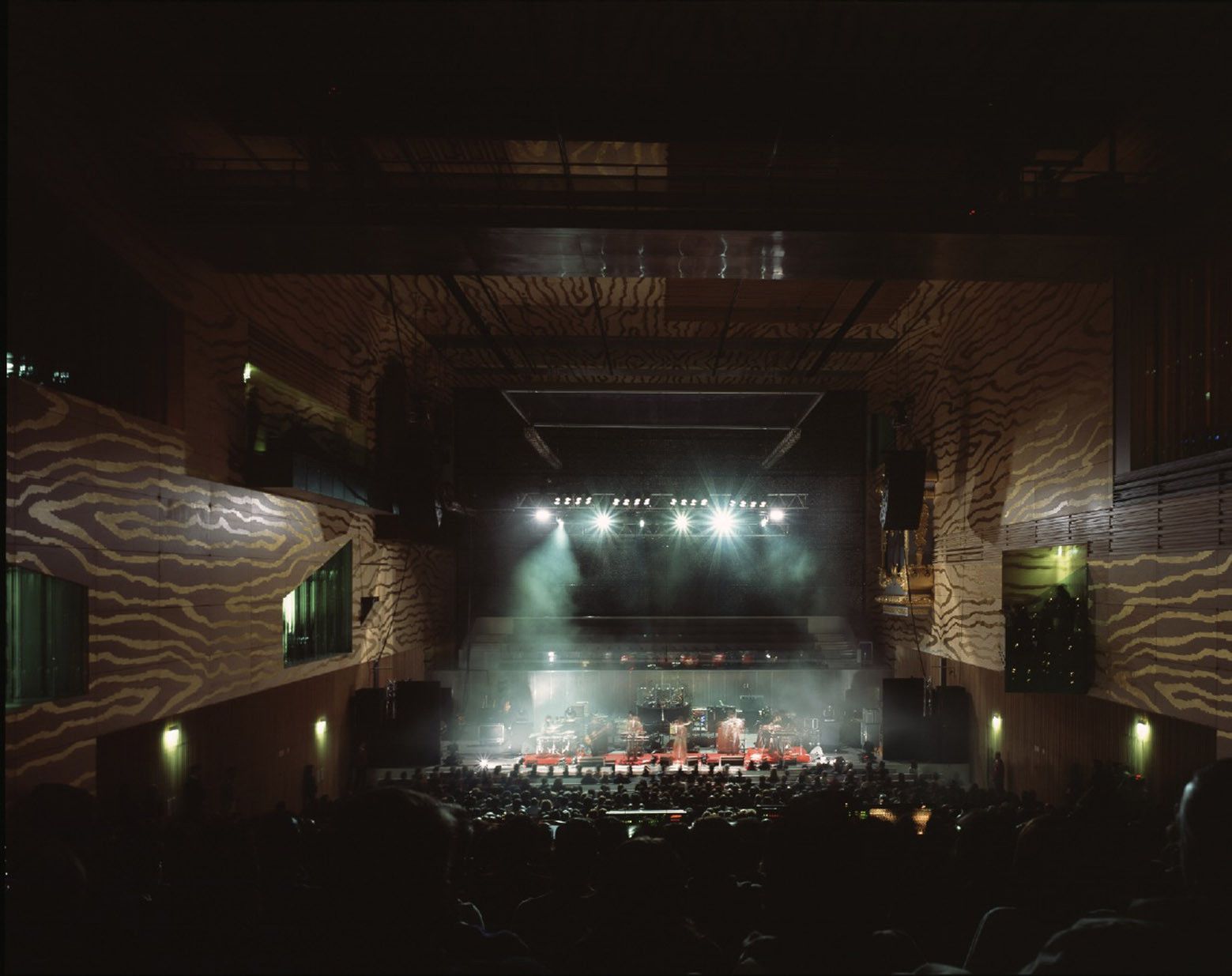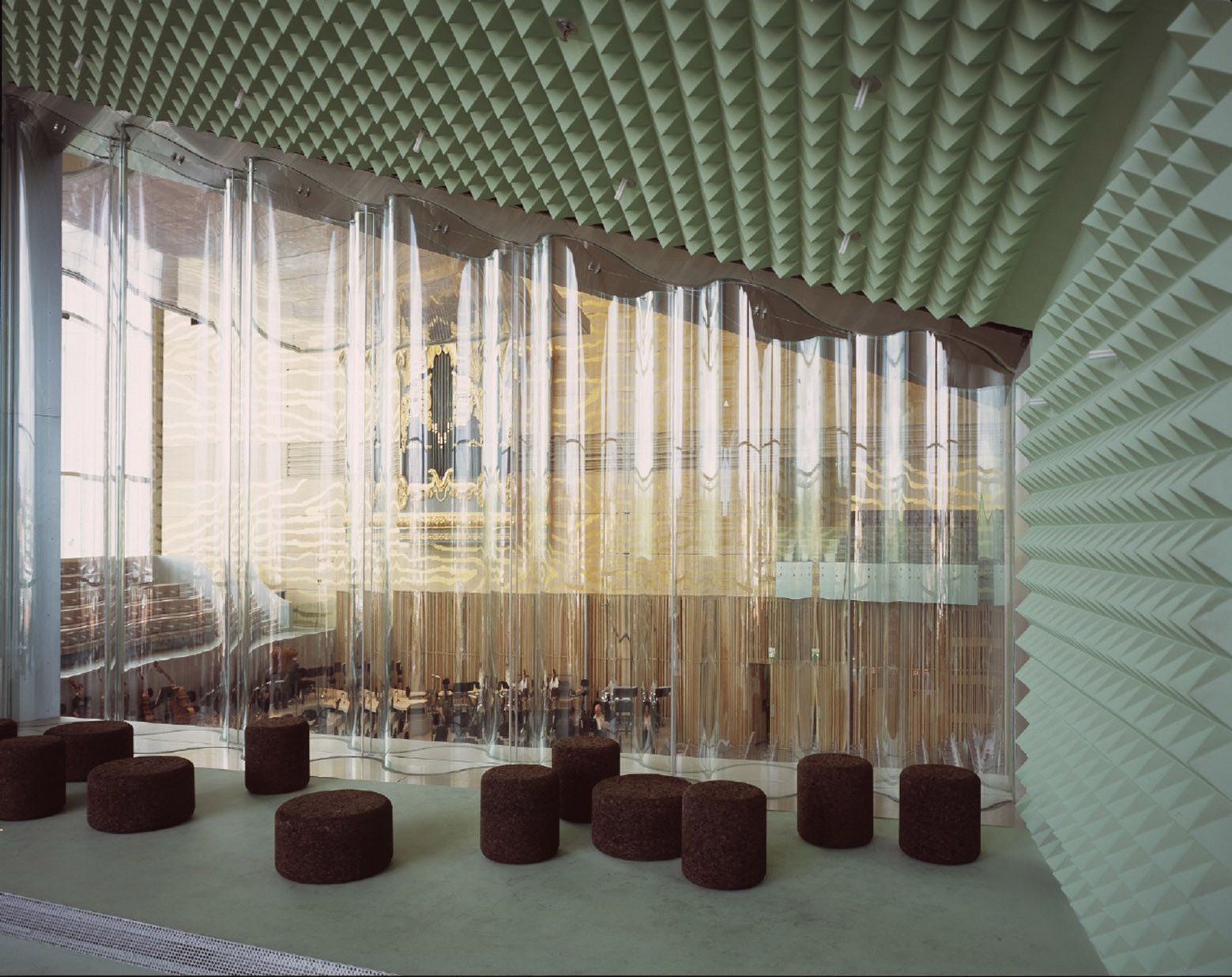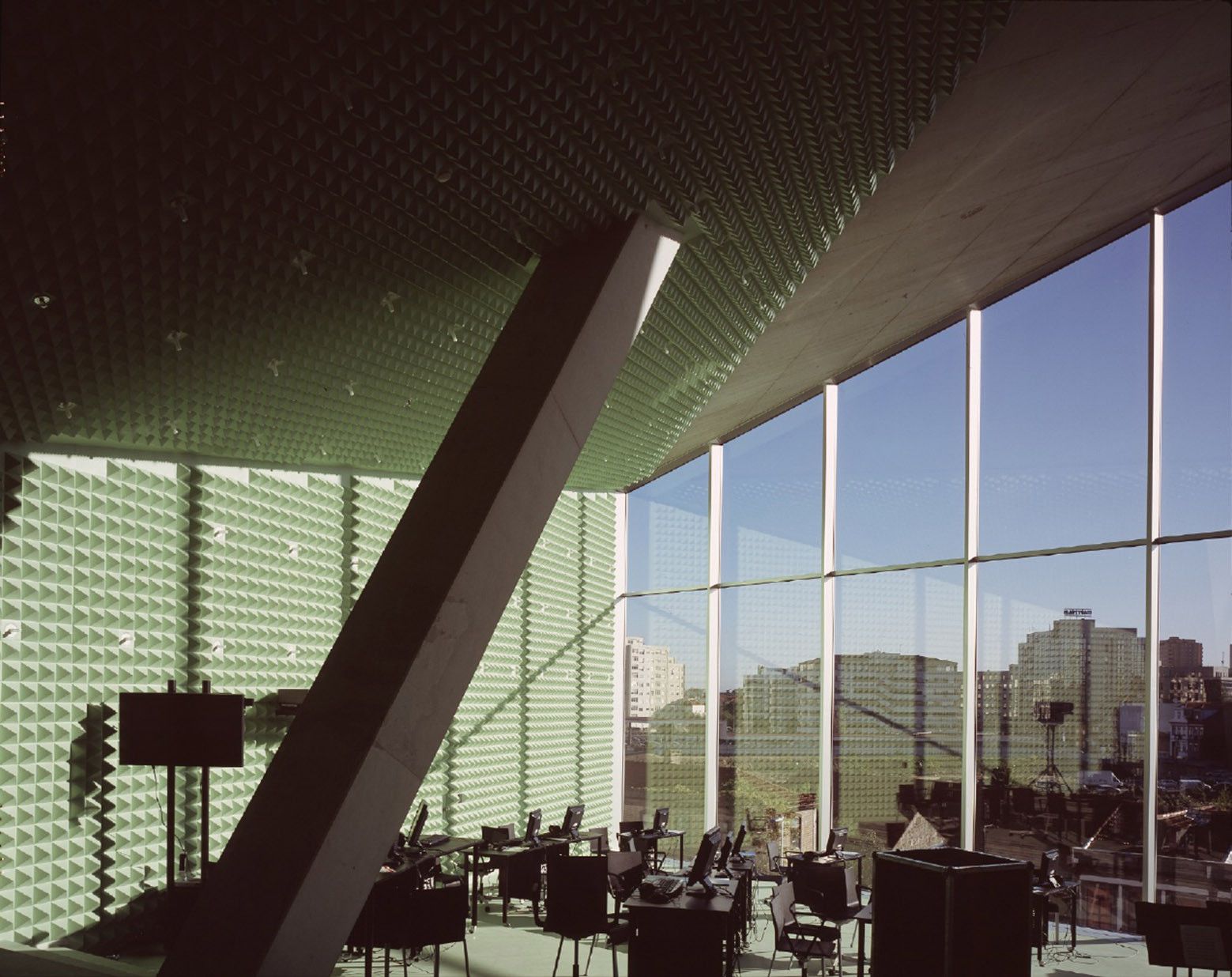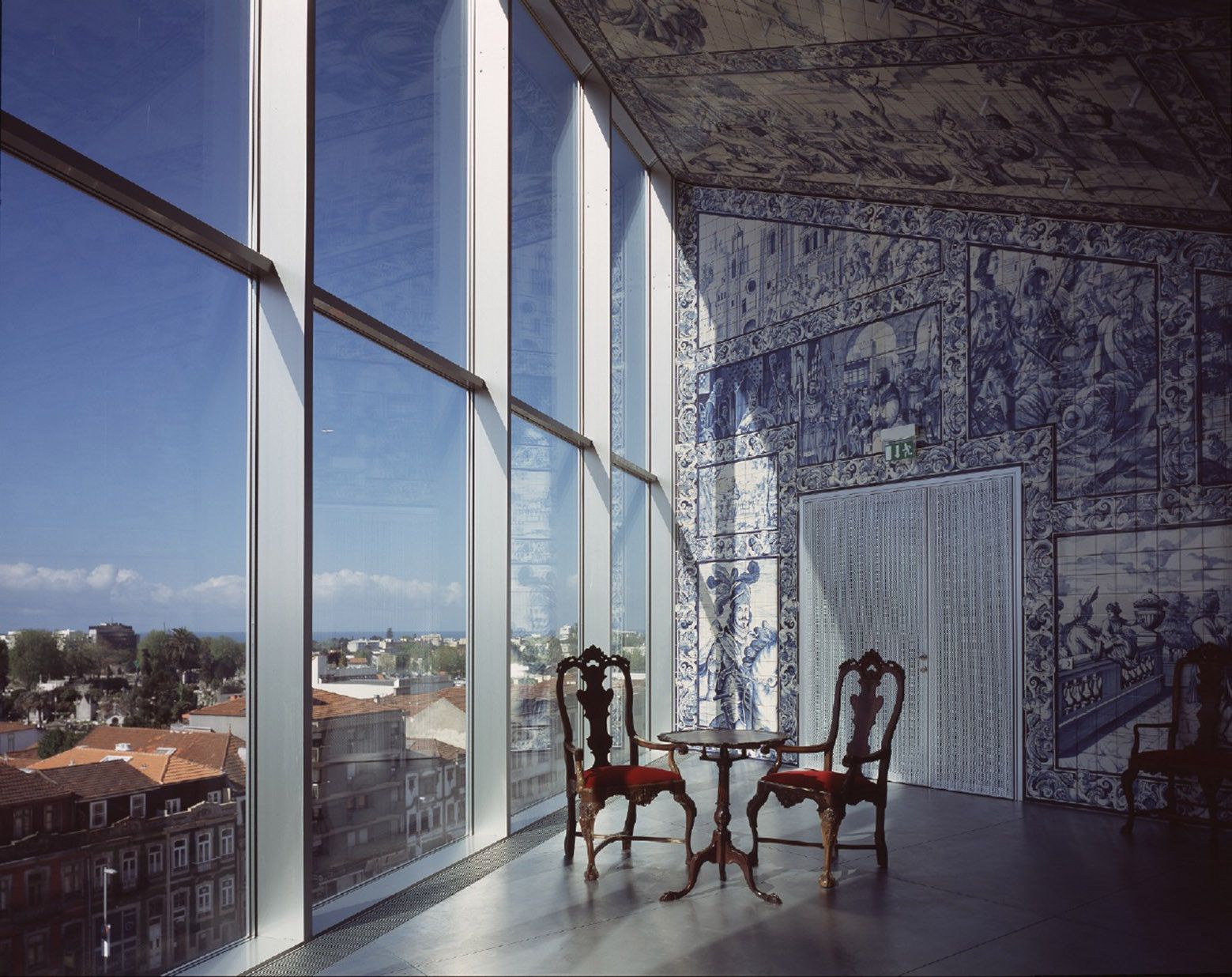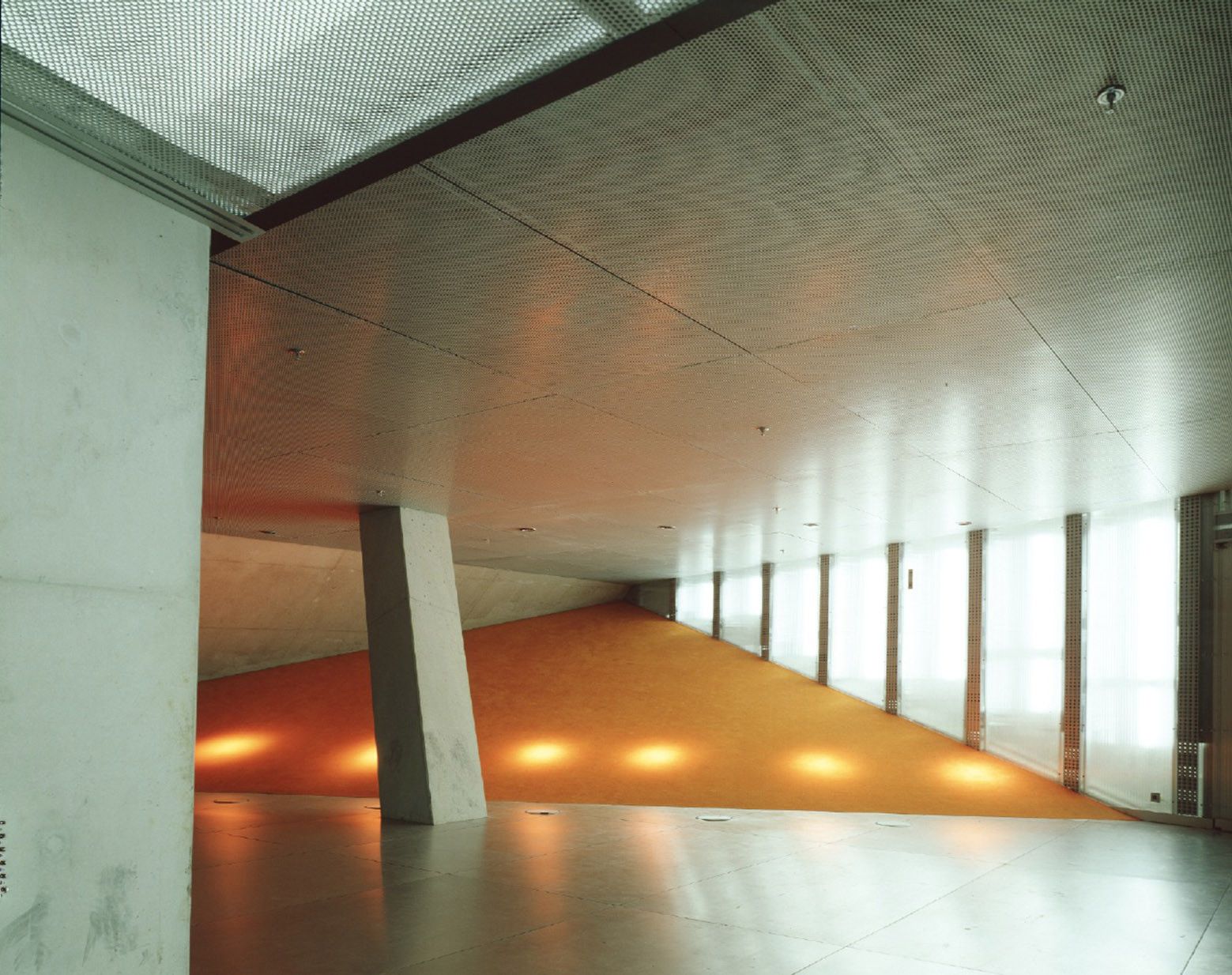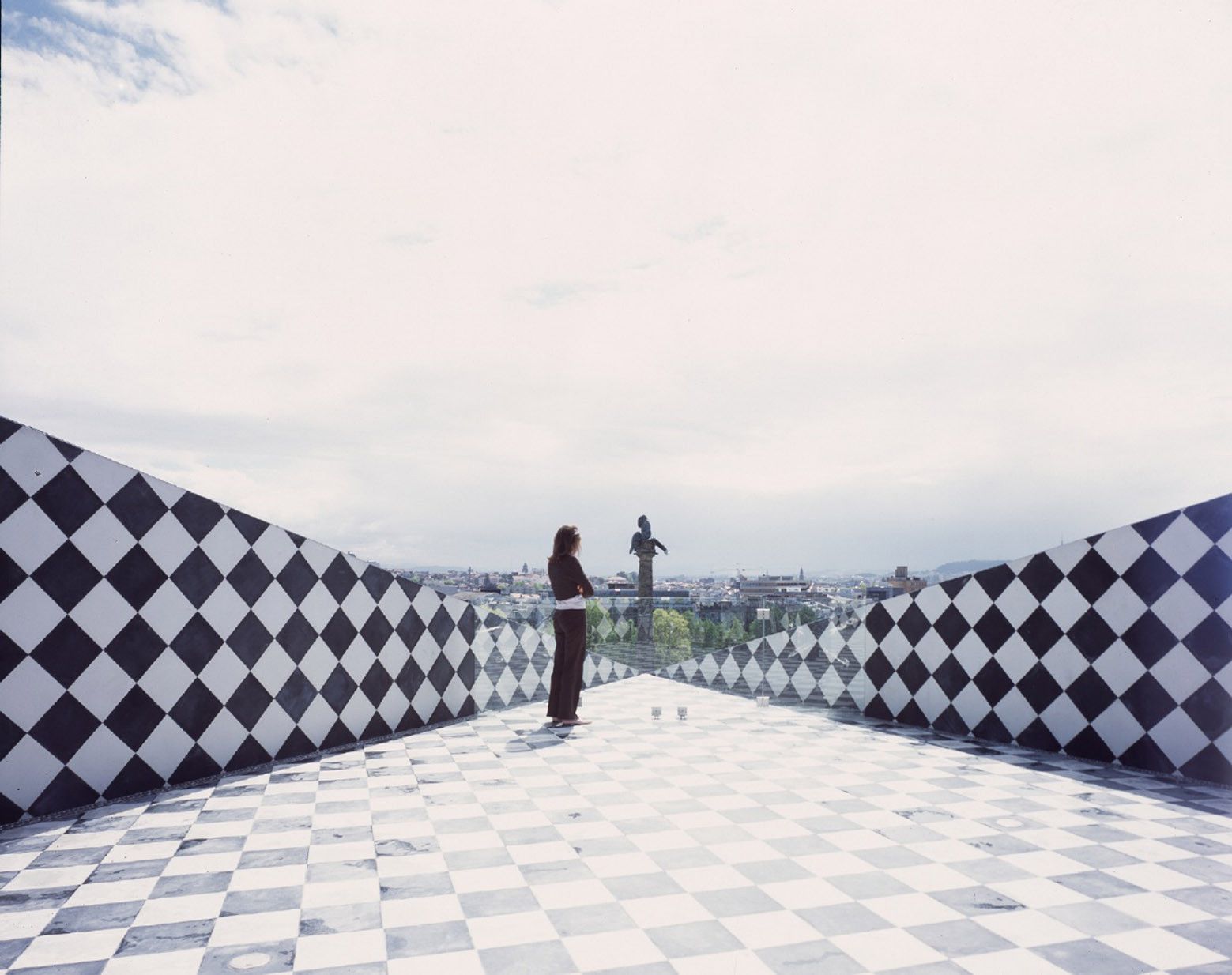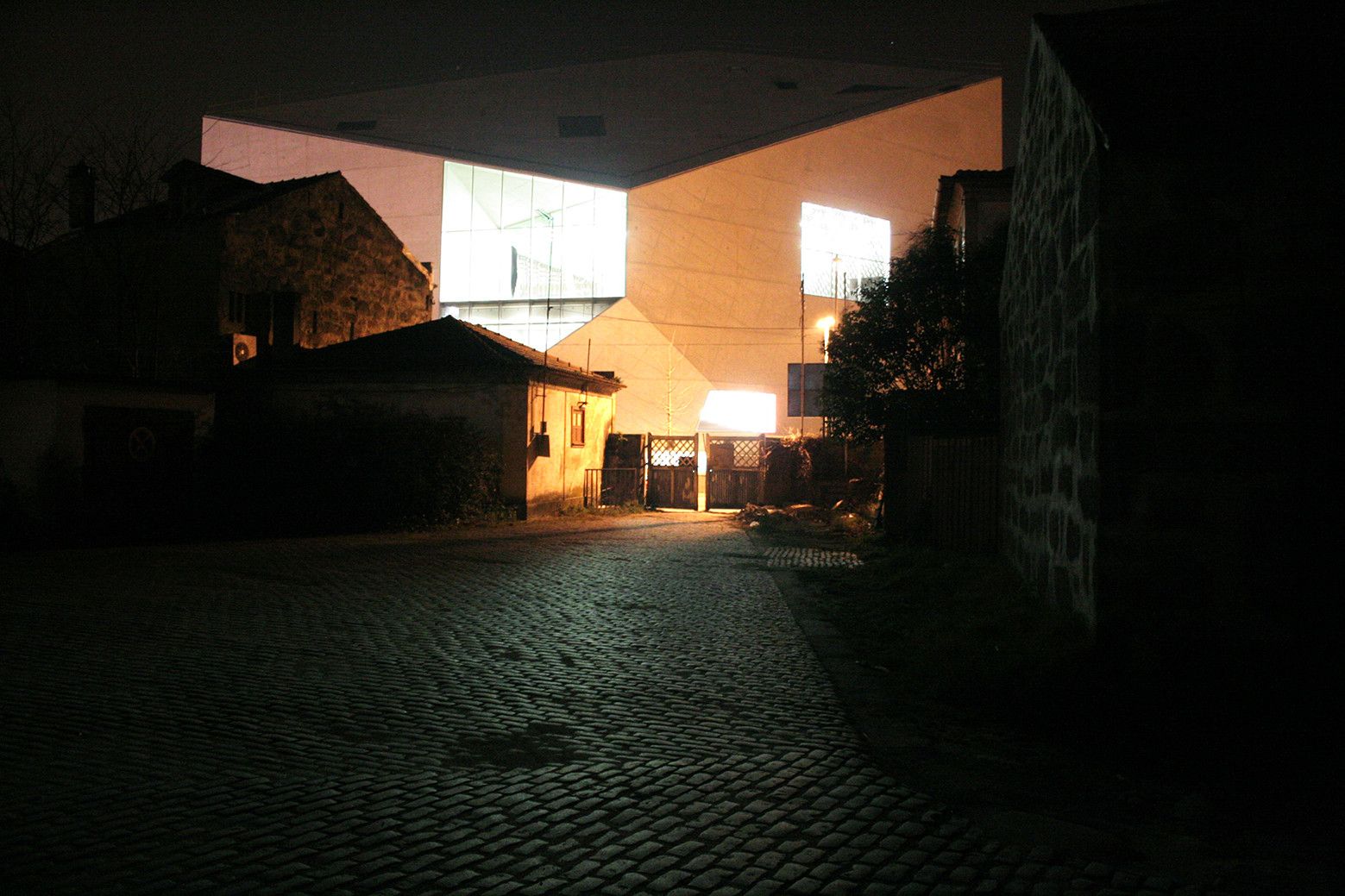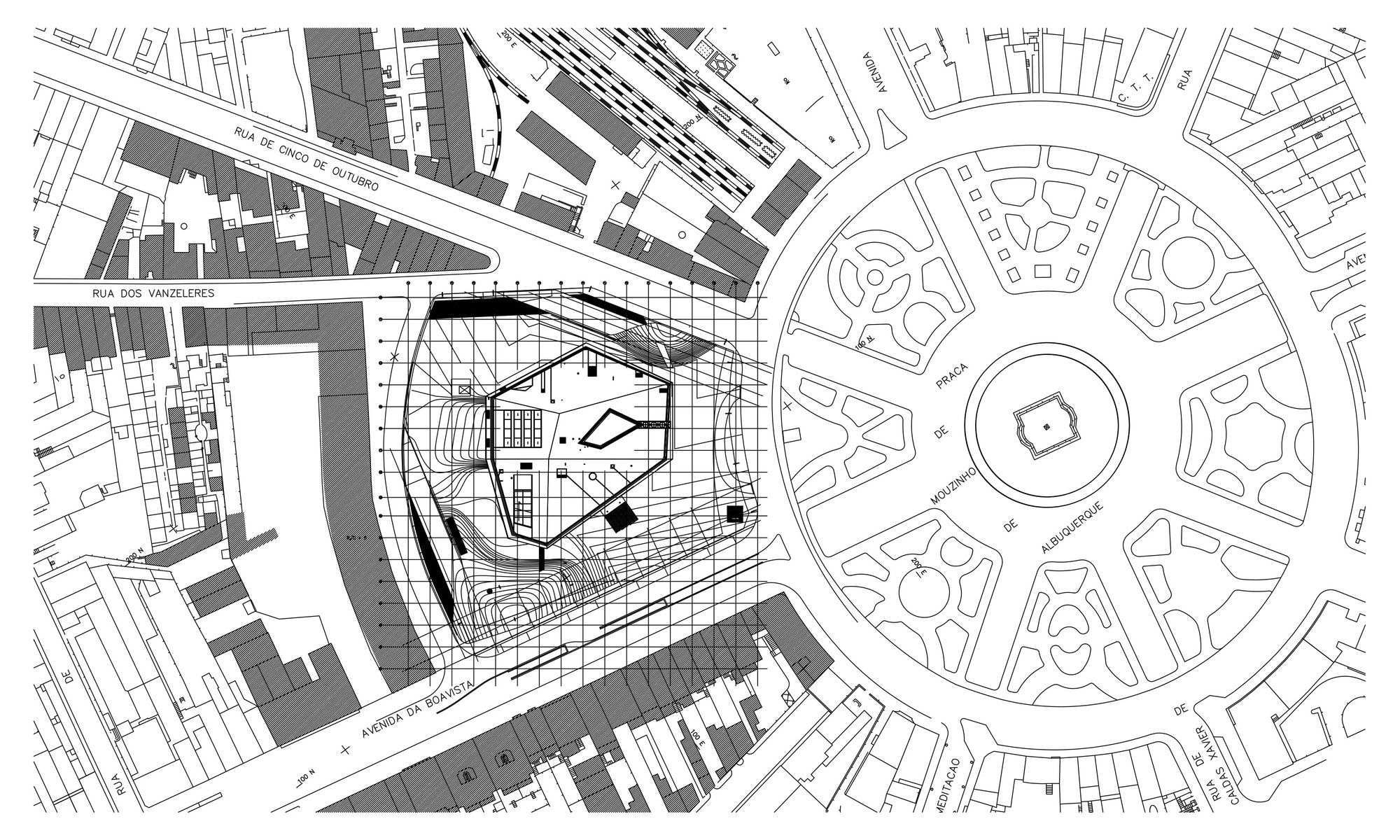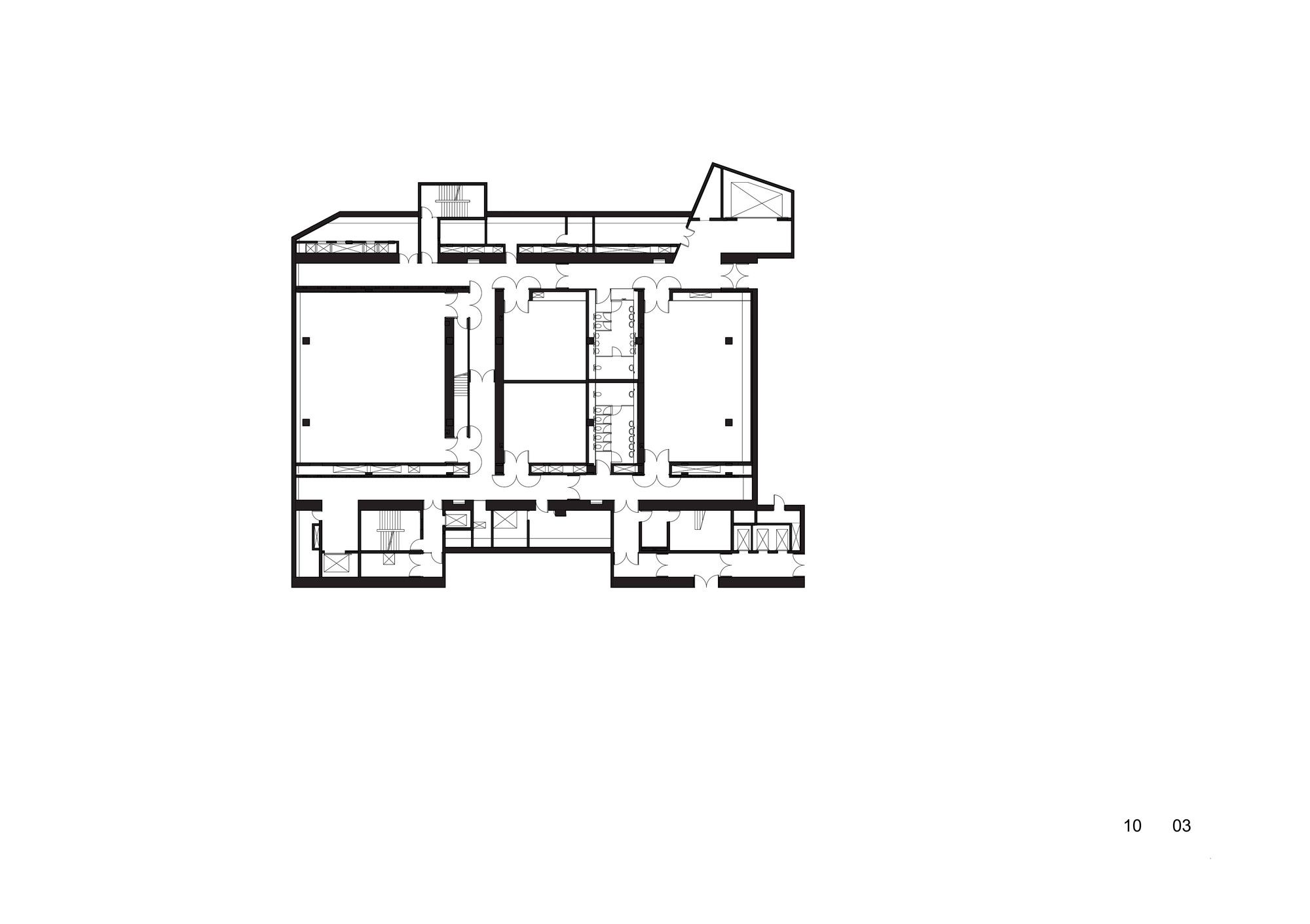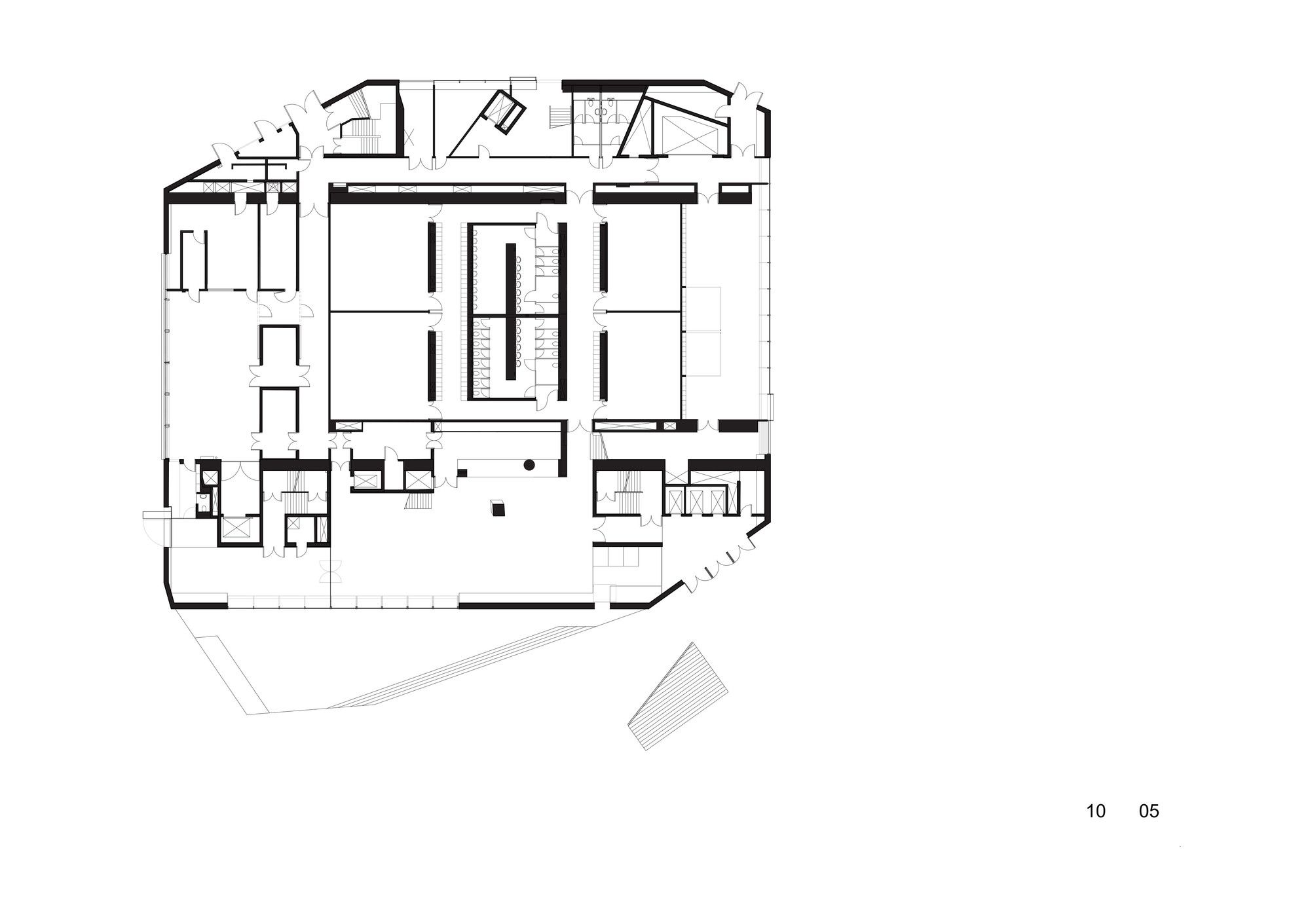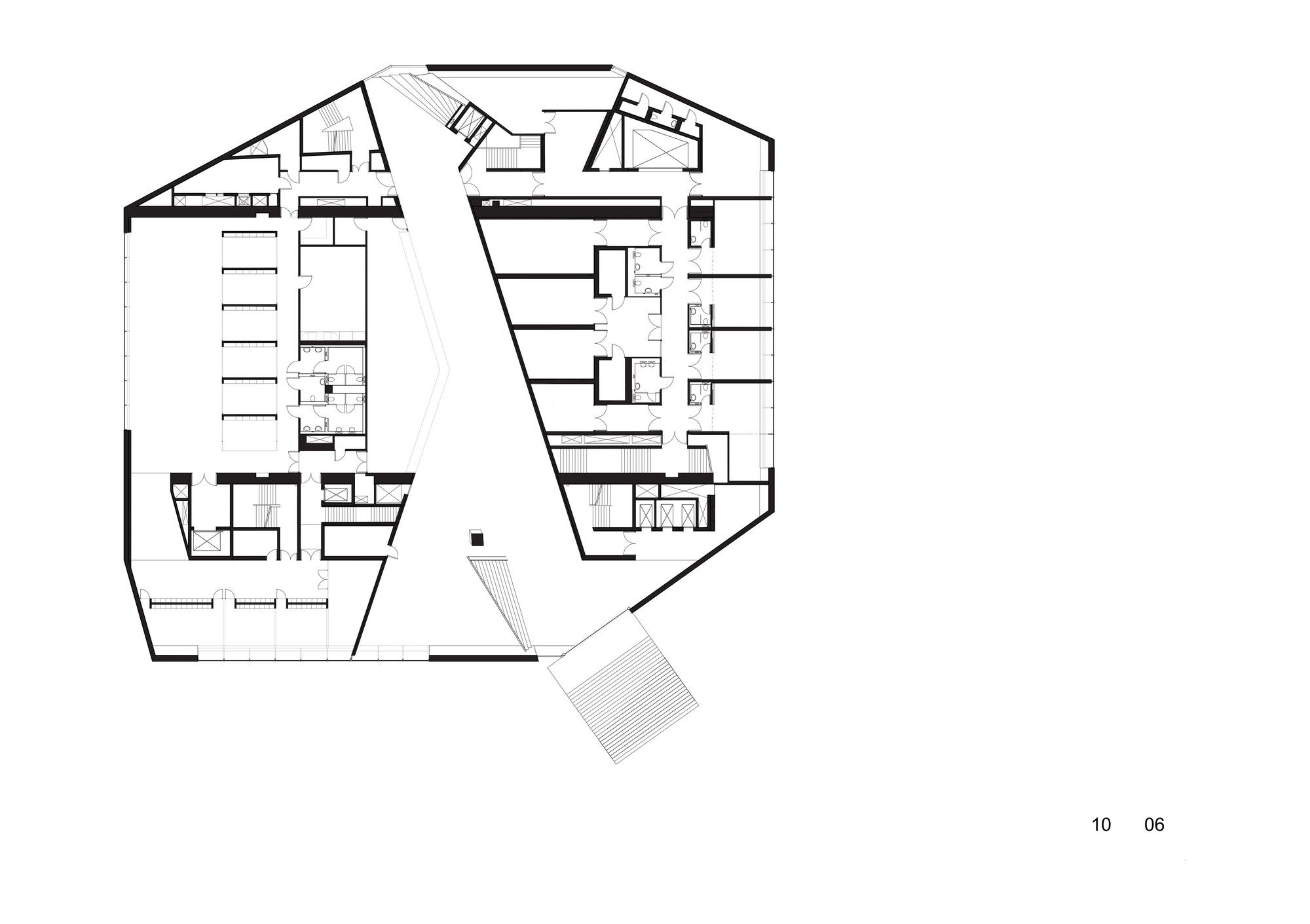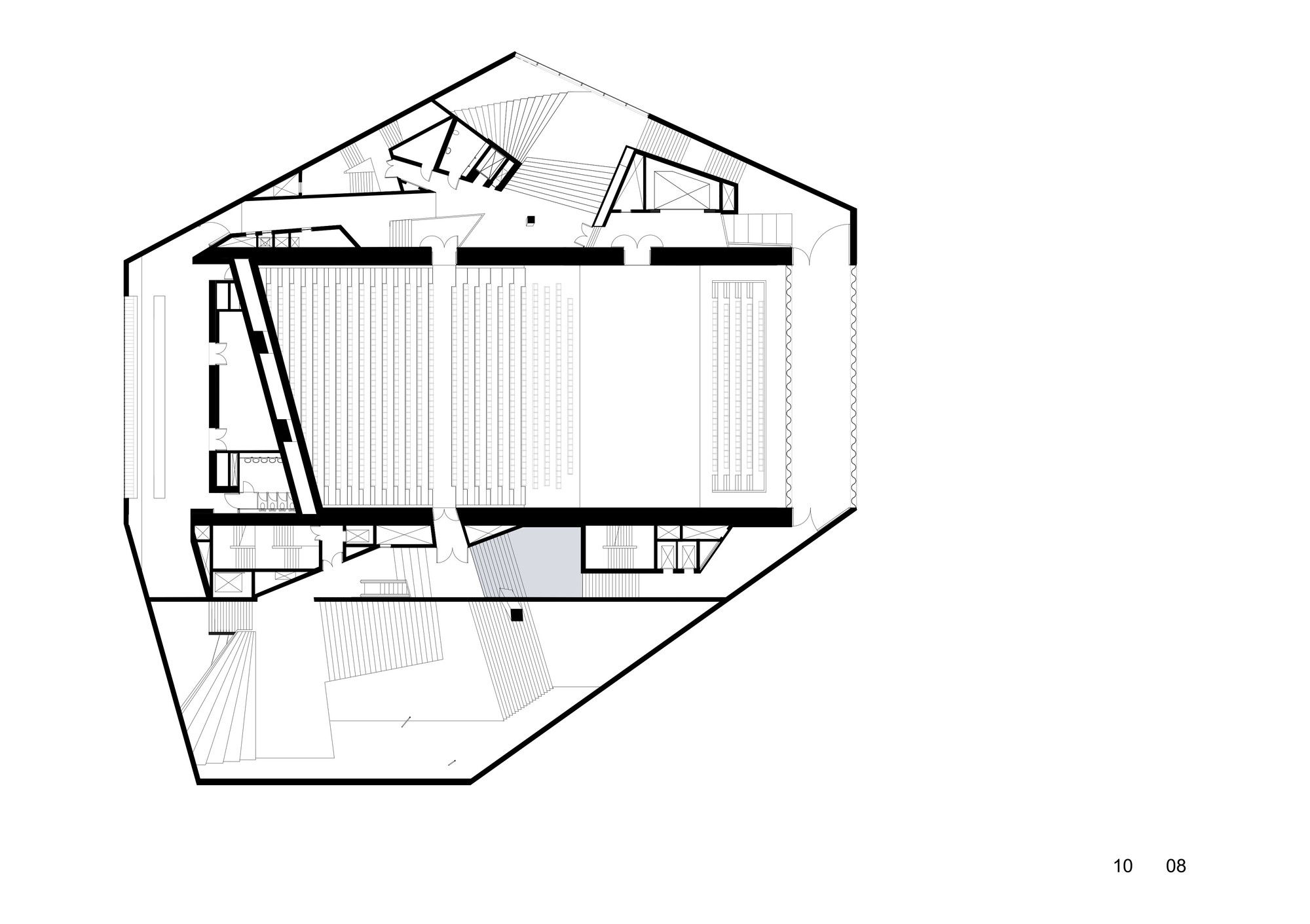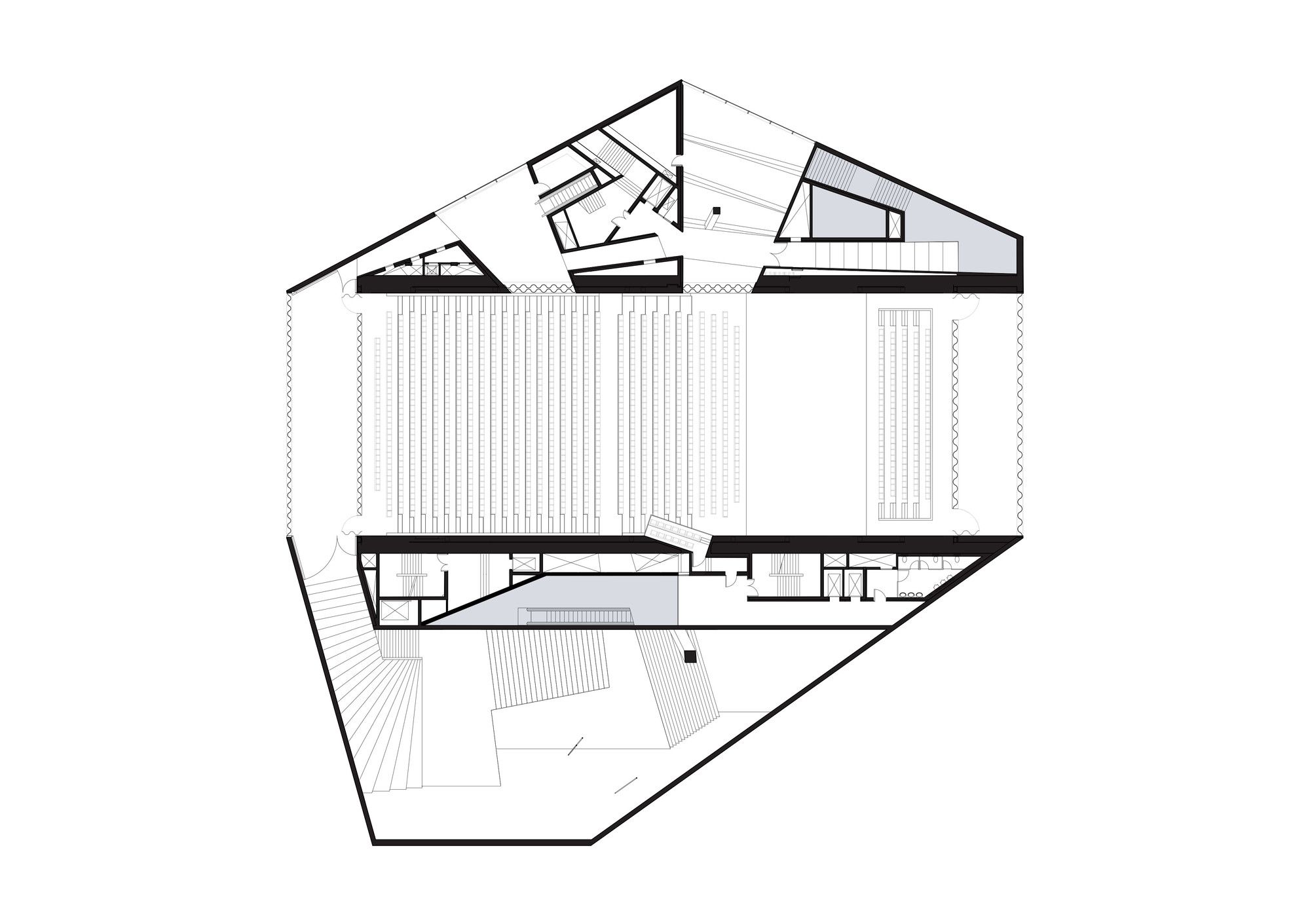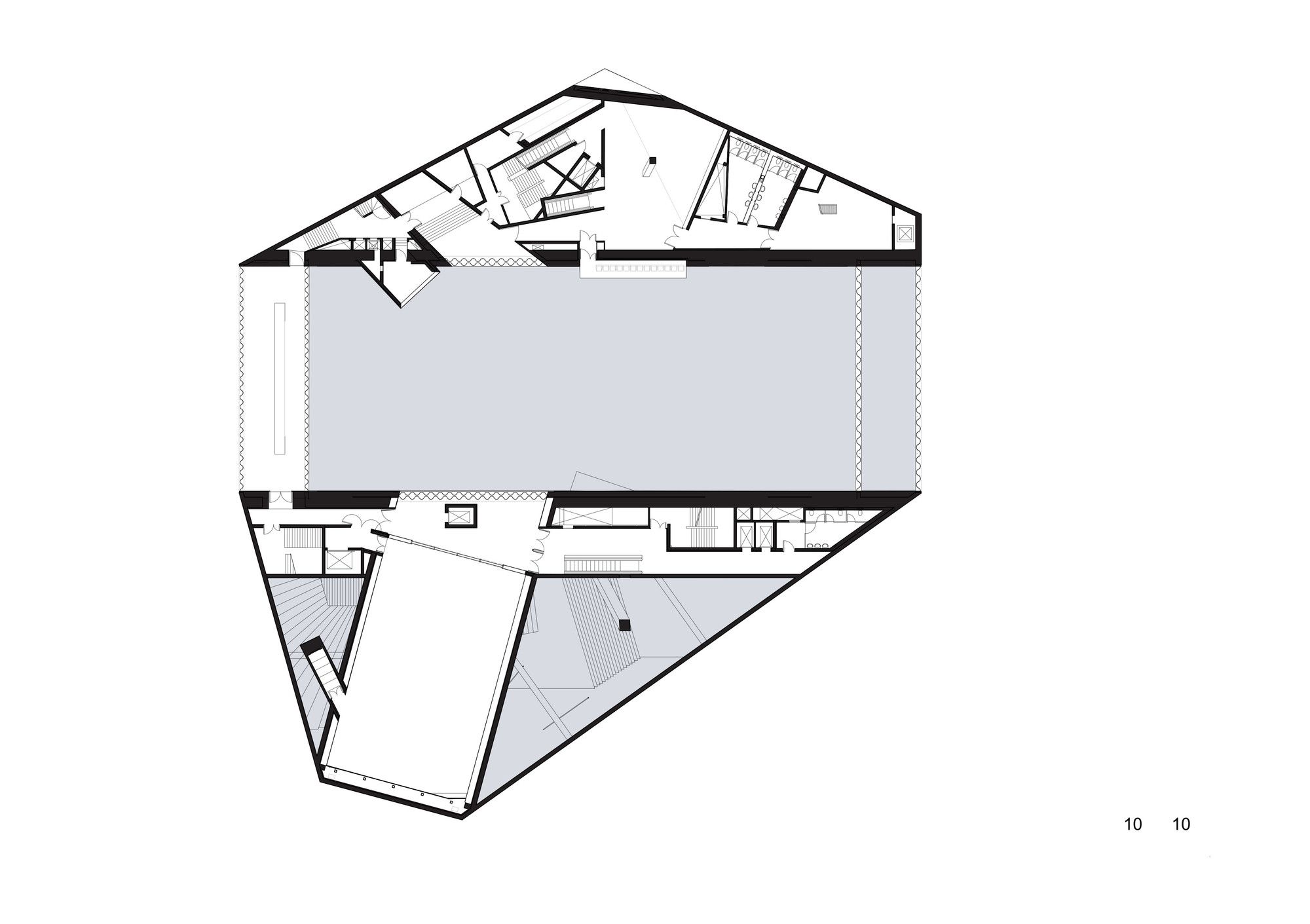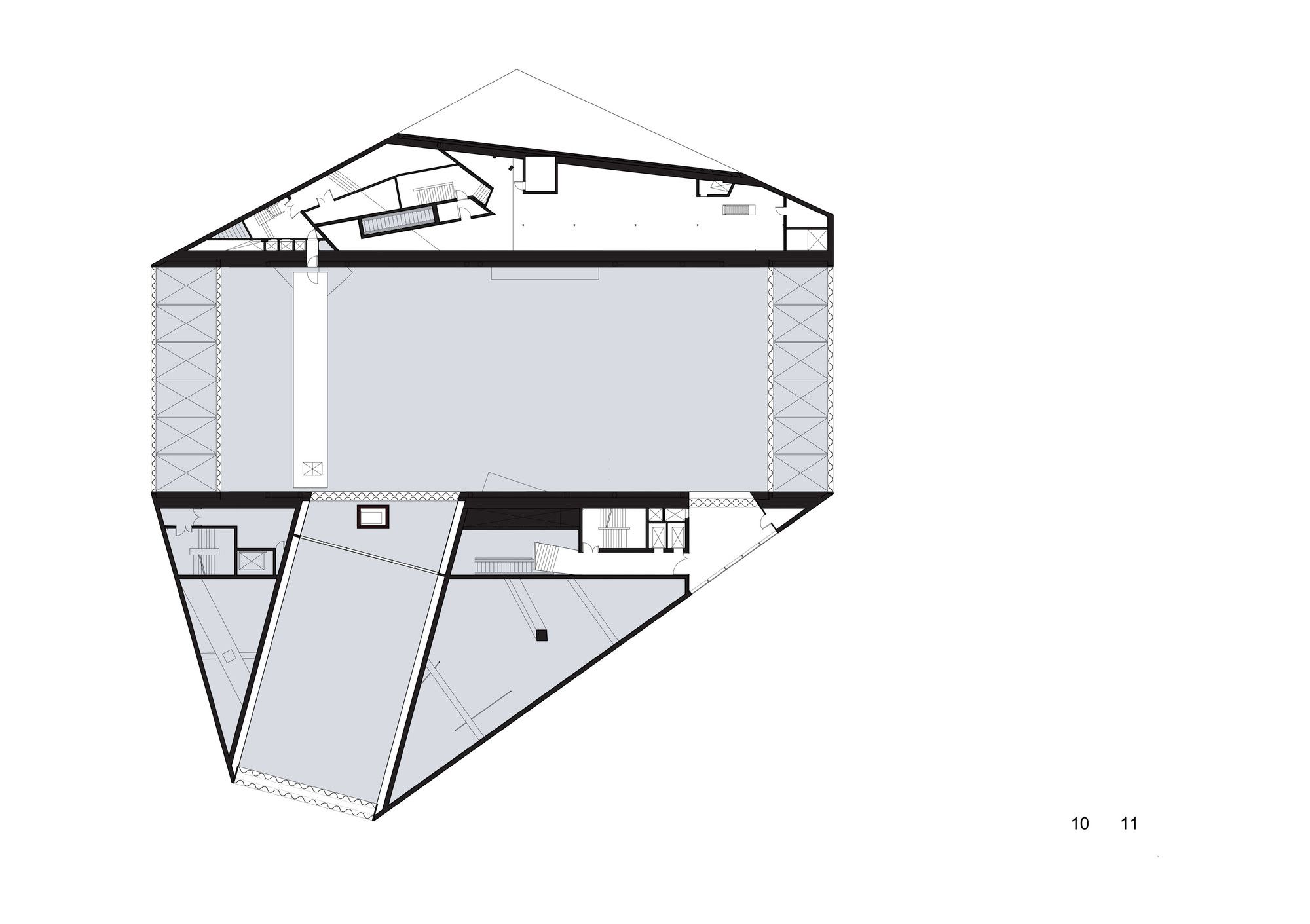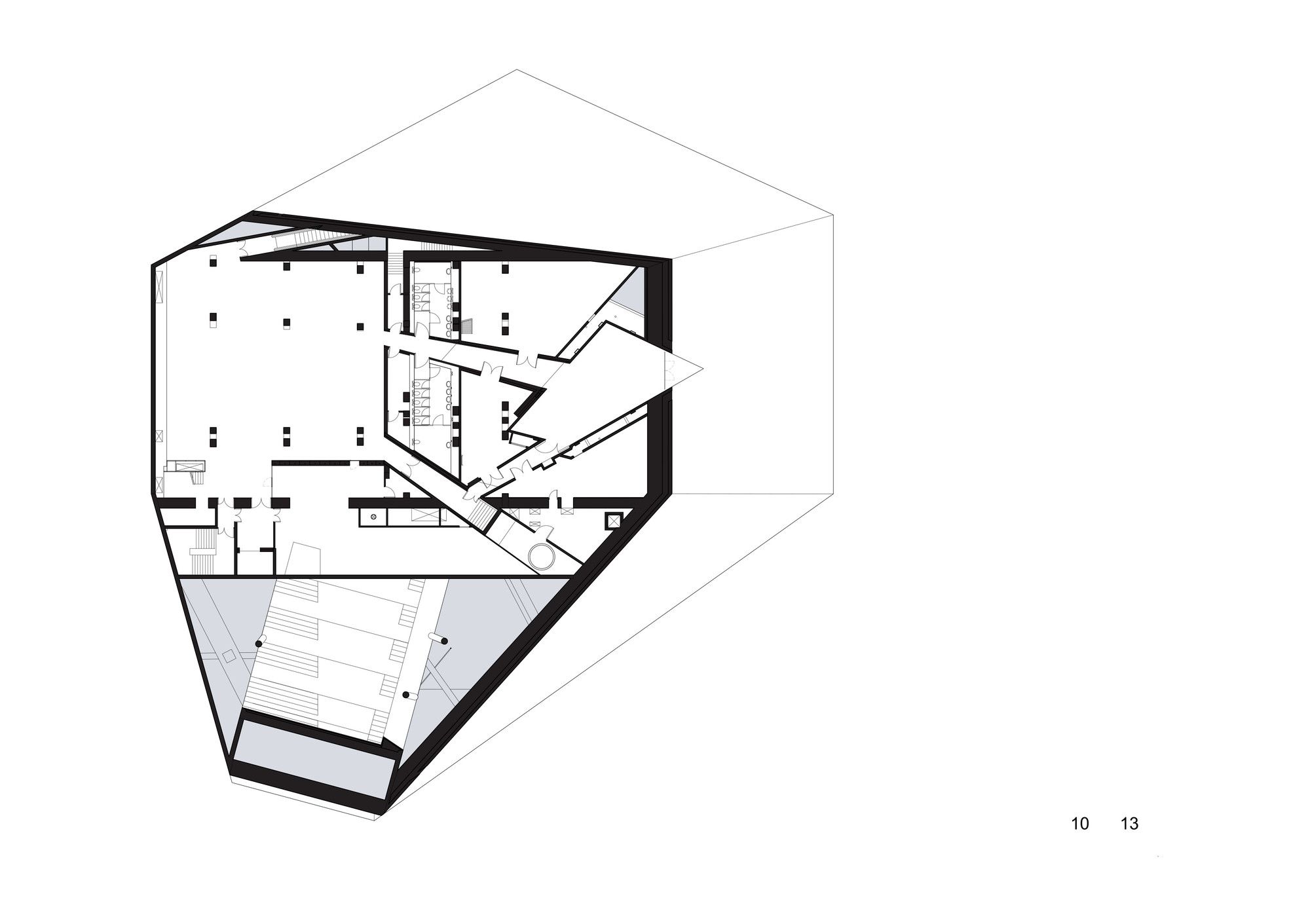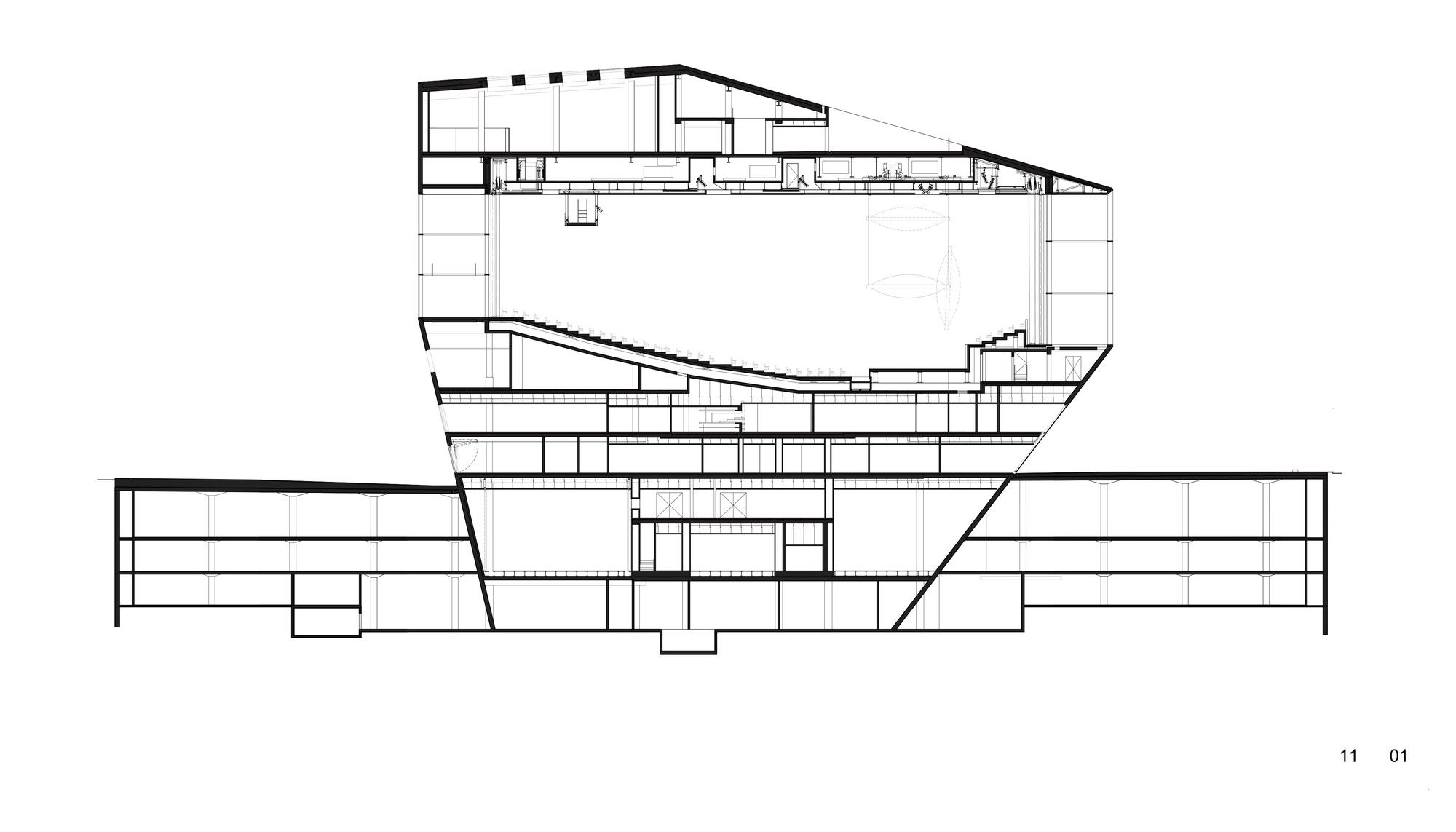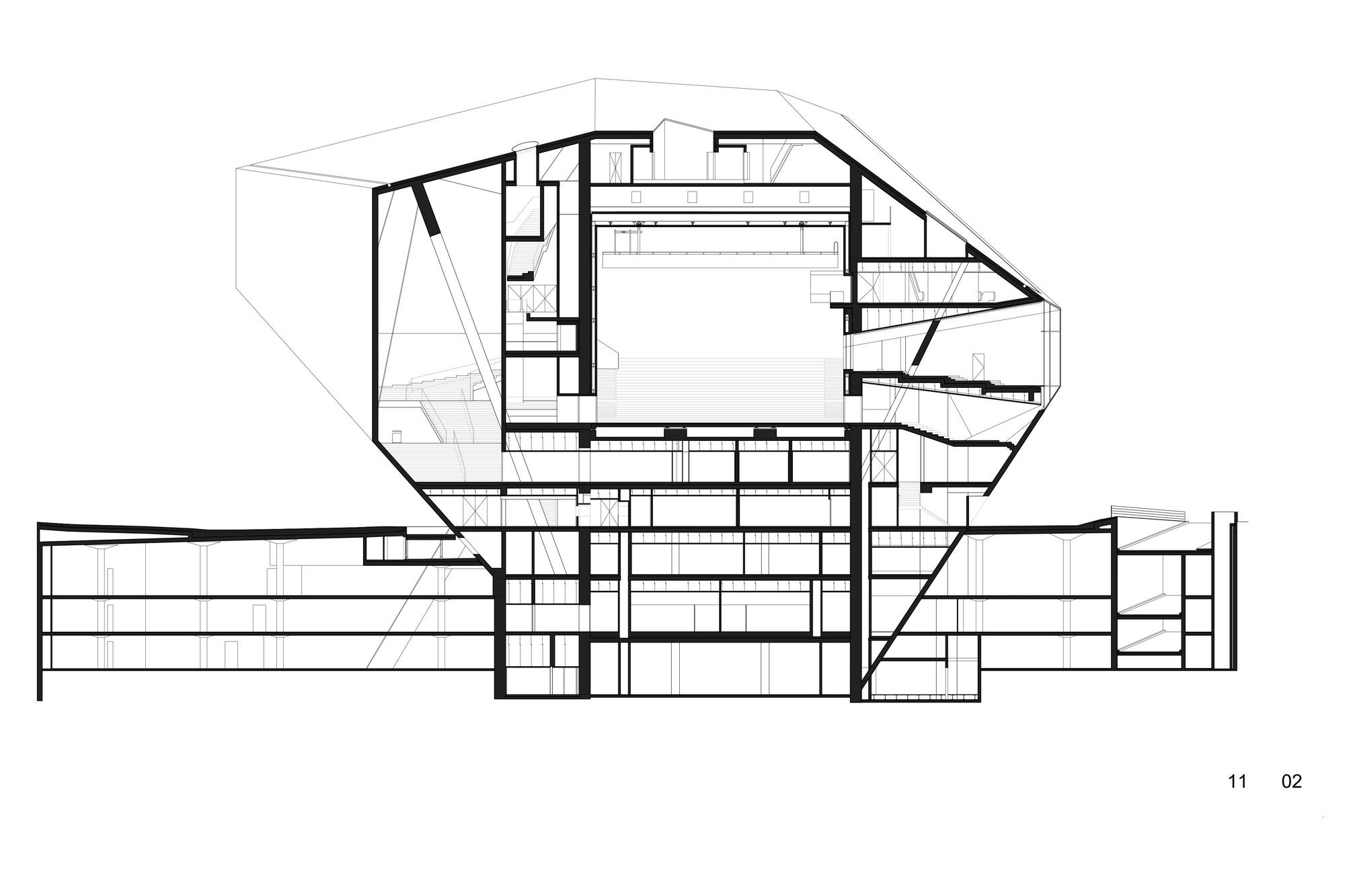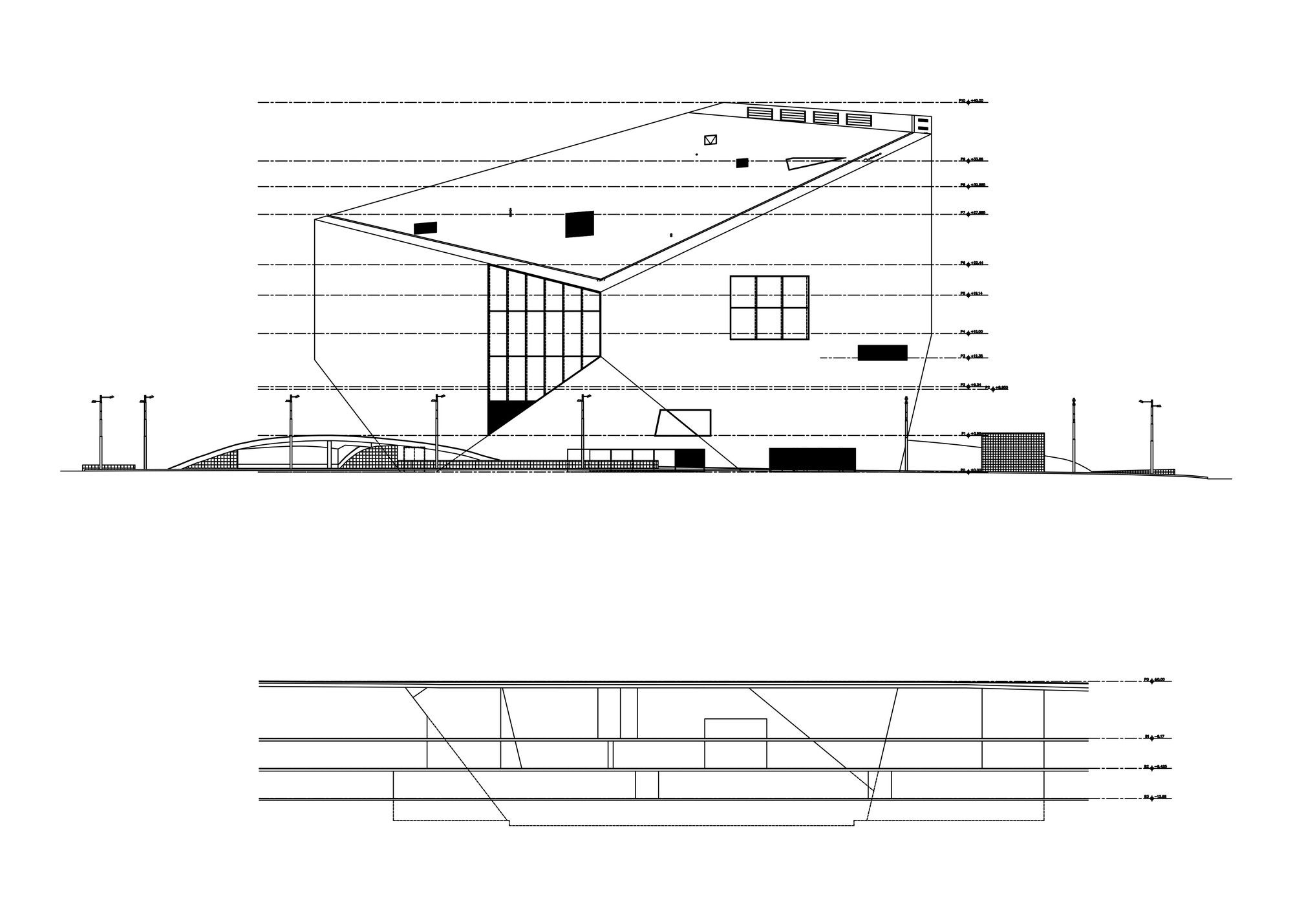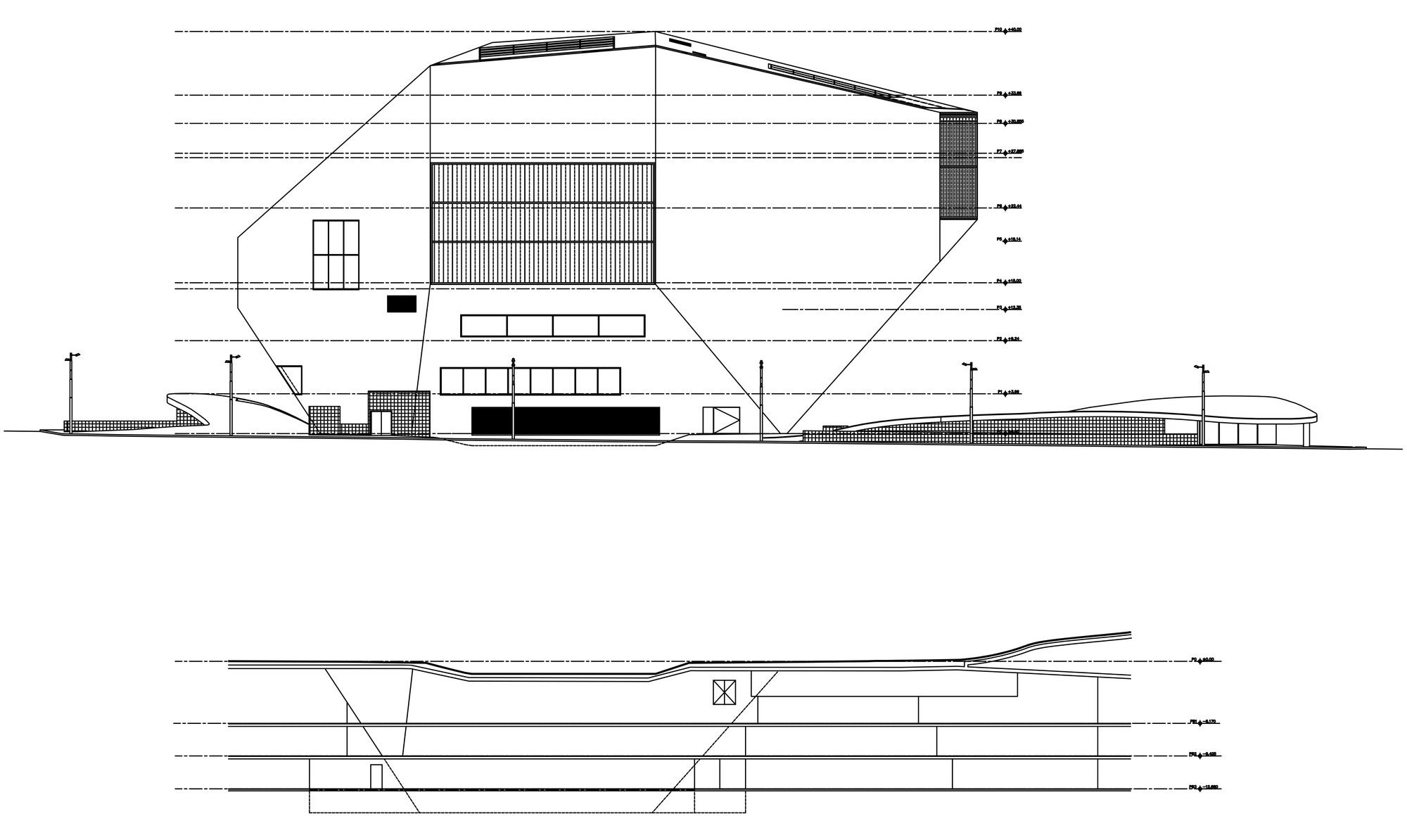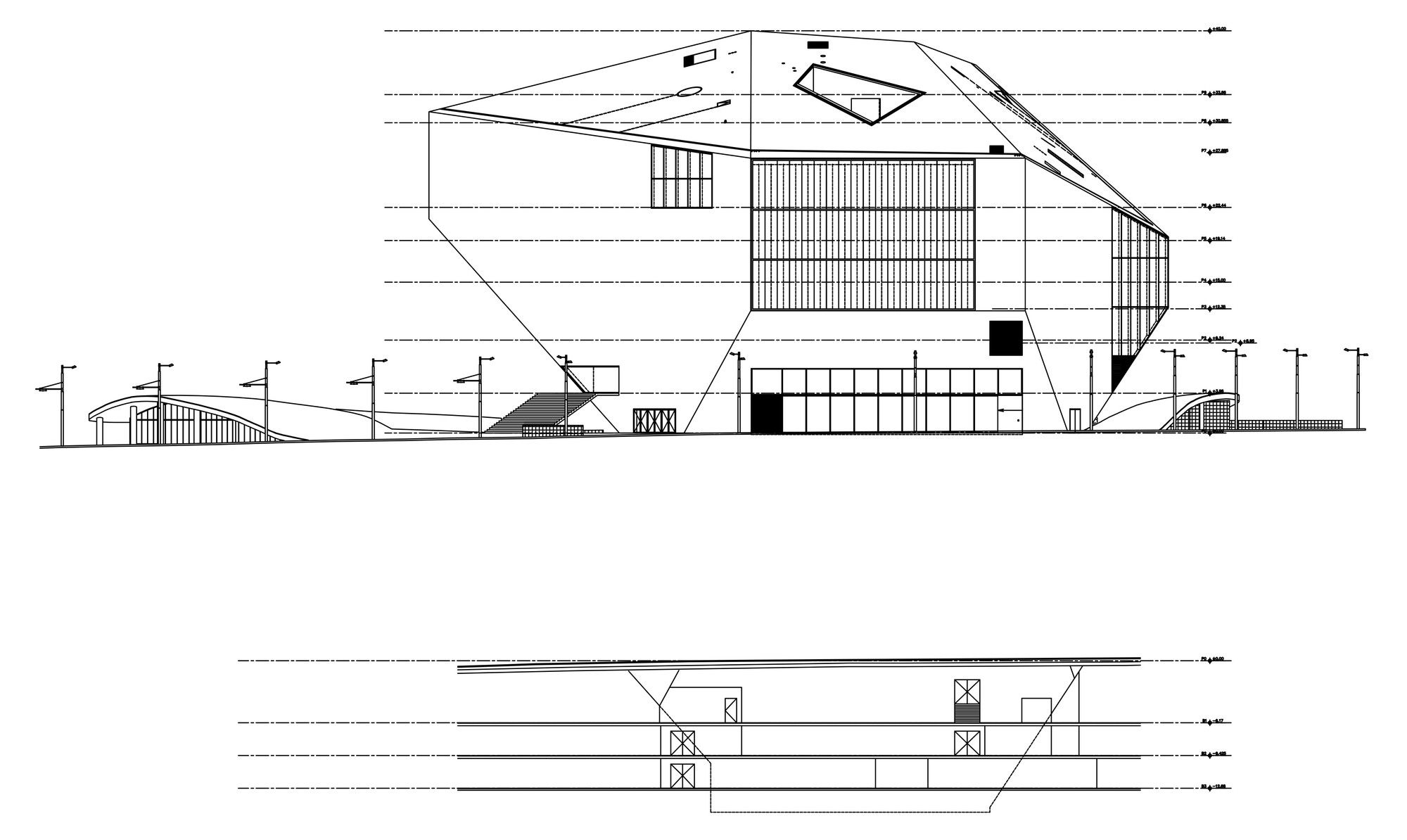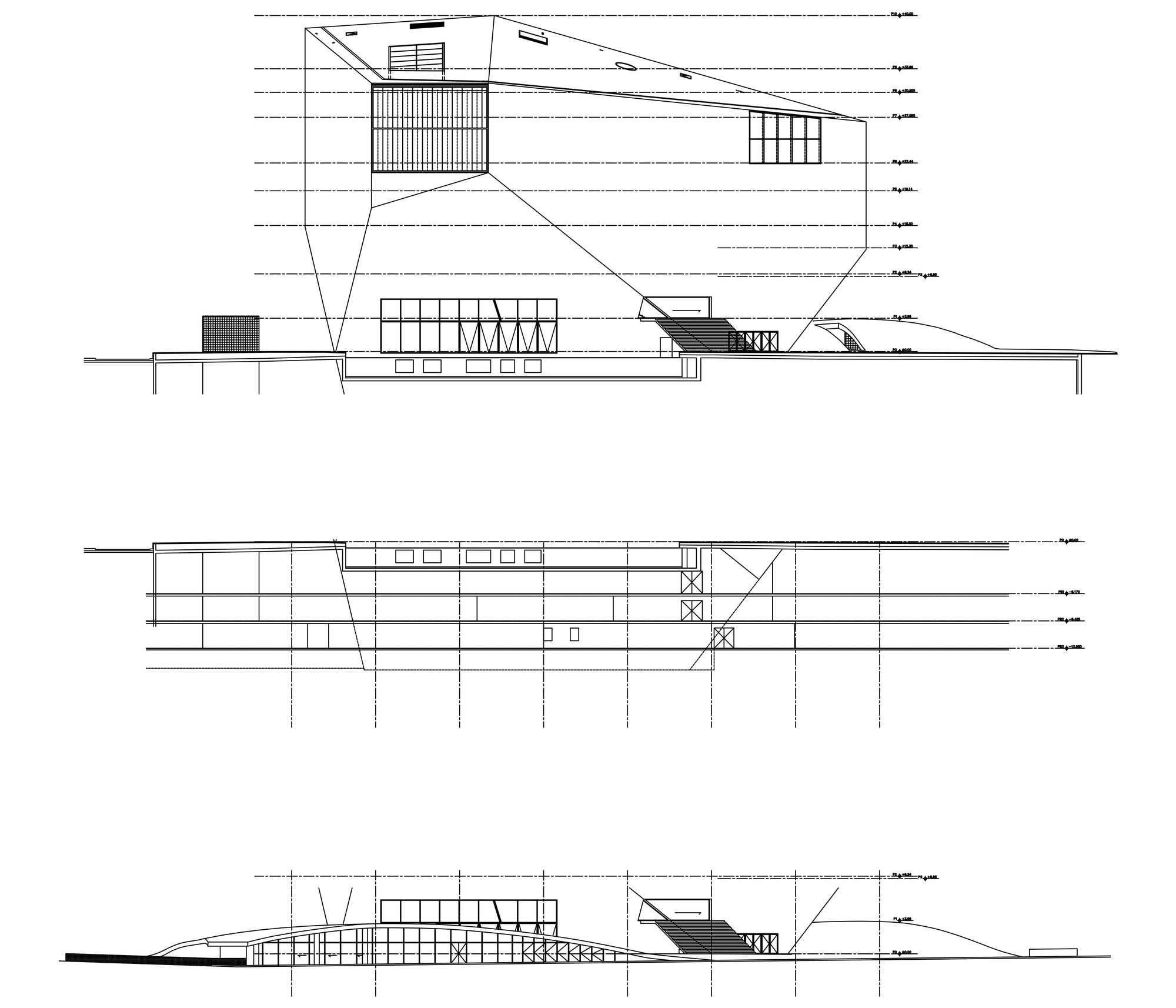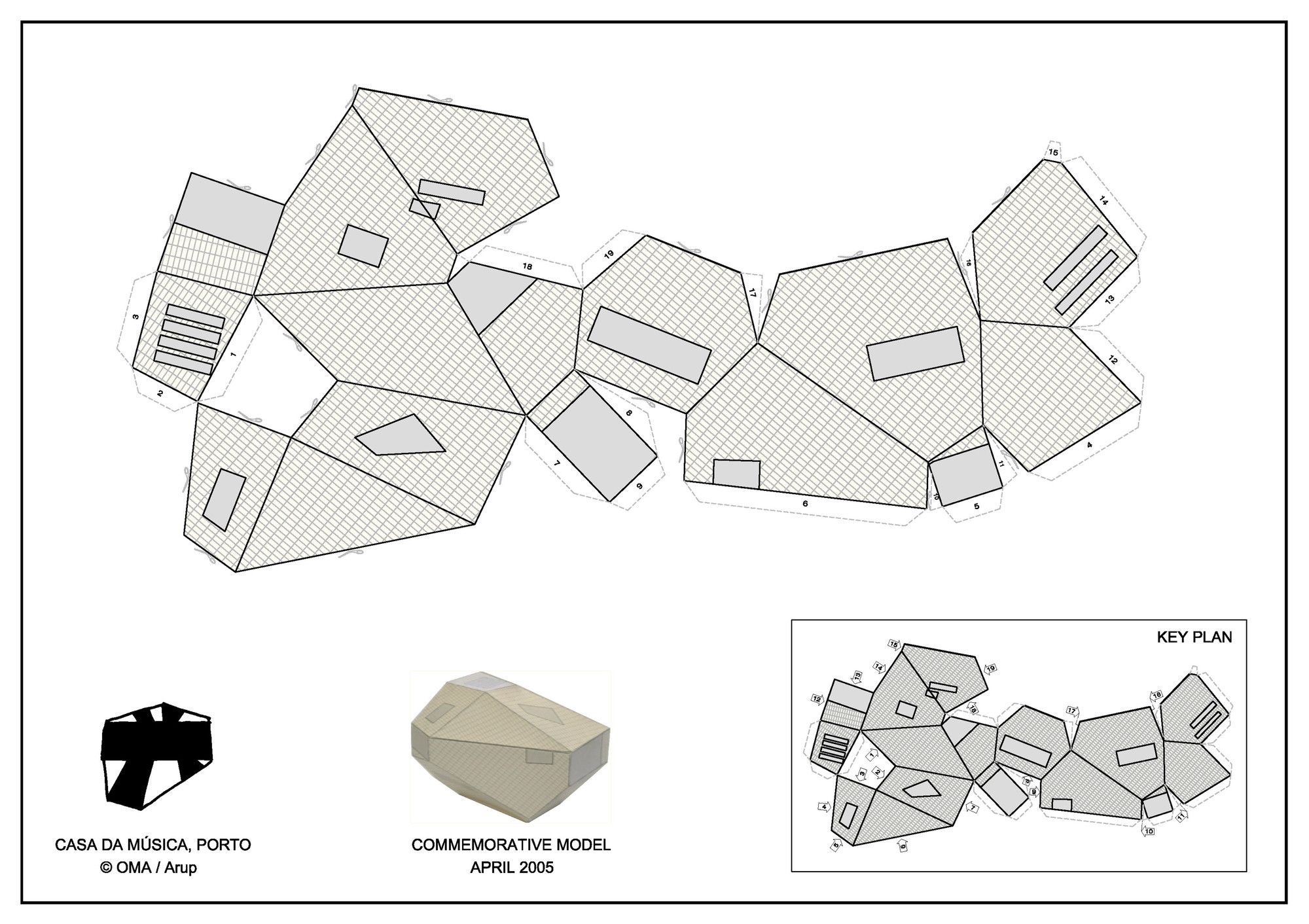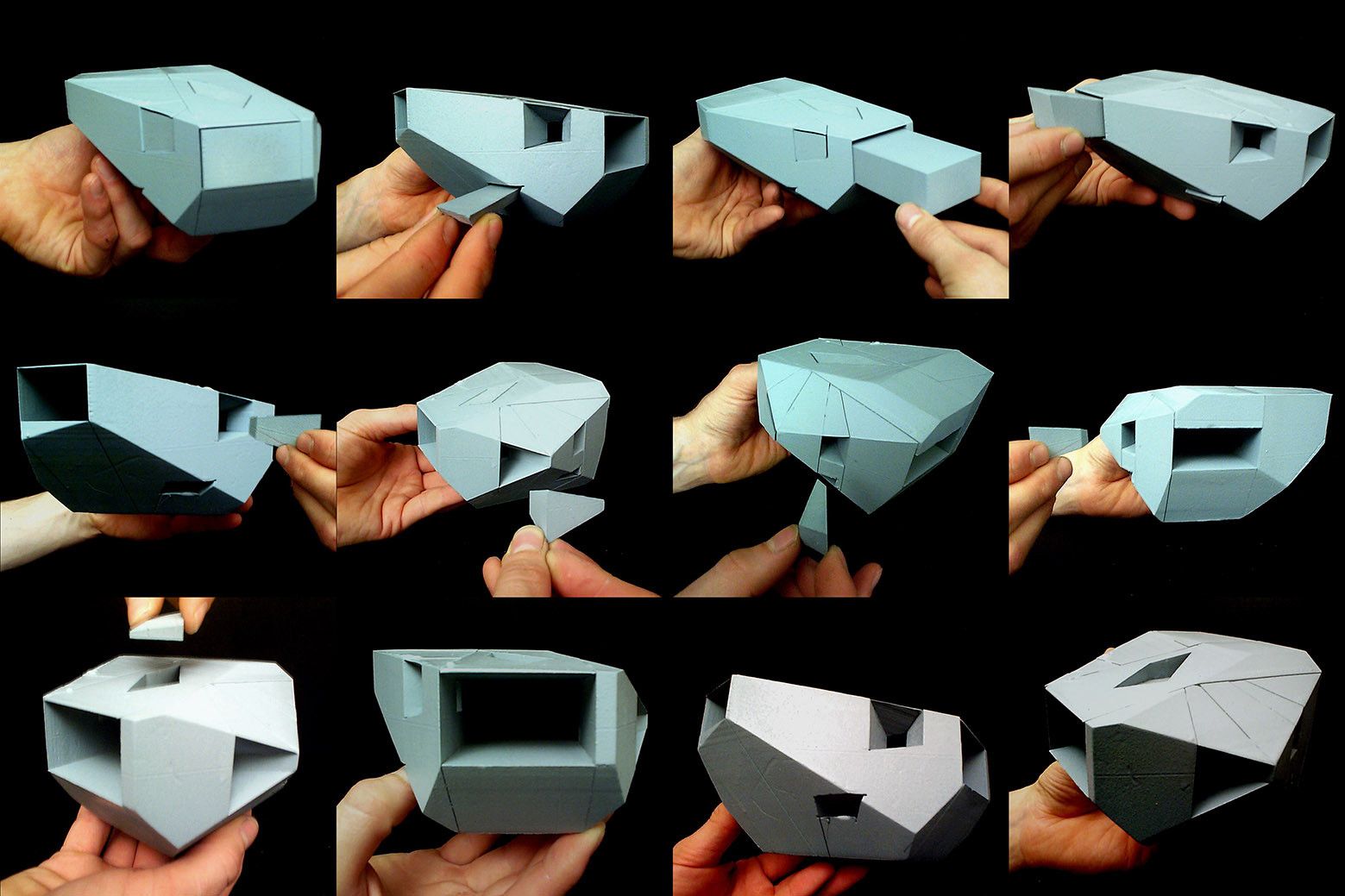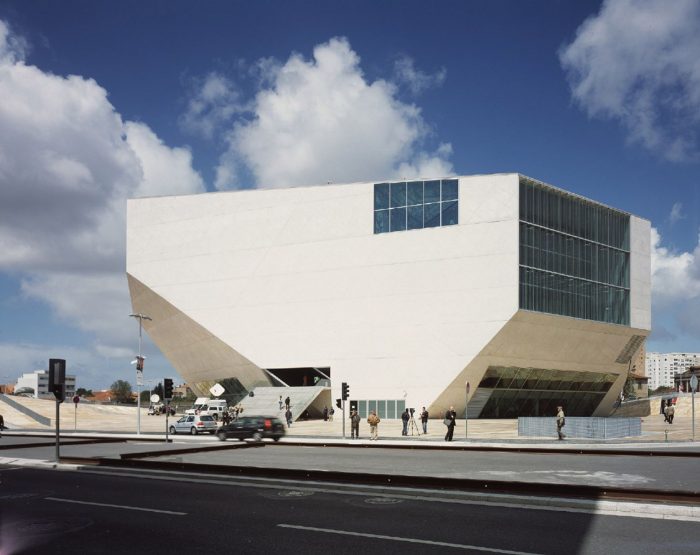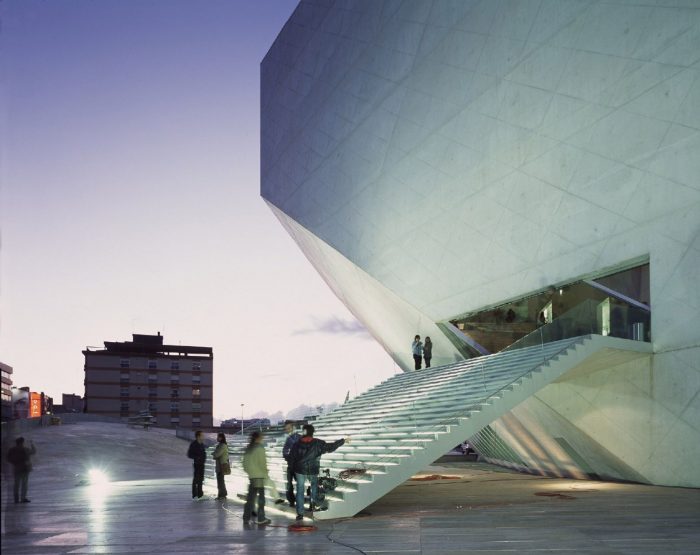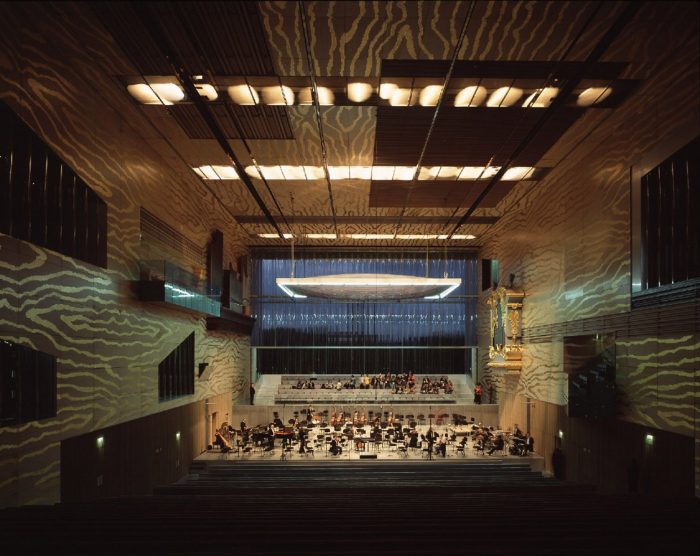Designed by OMA, The Casa da Musica is situated on Travertine Plaza, between the city’s historic quarter and a working-class neighborhood, adjacent to the Rotunda da Boavista.
The past thirty years have seen frantic attempts by architects to escape the domination of the ‘shoe-box’ concert hall. Rather than struggle with the inescapable acoustic superiority of this traditional shape, the Casa da Musica attempts to reinvigorate the traditional concert hall in another way: by redefining the relationship between the hallowed interior and the general public outside. It has a distinctive faceted form, made of white concrete, which remains solid and believable in an age of too many icons. Inside, the elevated 1,300-seat (shoebox-shaped) Grand Auditorium has corrugated glass facades at either end that open the hall to the city and offer Porto itself as a dramatic backdrop for performances. Casa da Musica reveals its contents without being didactic, at the same time, it casts the city in a new light.
Locating the Casa da Musica was a key in the development of OMA’s thinking, who chose not to build the new concert hall in the ring of the old buildings defining the Rotunda, but to create a solitary building standing on a travertine-paved plateau. With this concept, issues of symbolism, visibility, and access were resolved in one gesture.
As well as the Grand Auditorium, conceived as a simple mass hollowed out end-to-end from the solid form of the building, the Casa da Musica also contains a smaller, more flexible performance space with no fixed seating, ten rehearsal rooms, recording studios, an educational area, a restaurant, terrace, bars, a VIP room, administration areas and an underground car park for 600 vehicles.
Innovative use of materials and color was another imperative, as well as the unique curtain-like glass walls at either end of the Grand Auditorium. The walls are cladded in plywood with enlarged wood patterns embossed in gold, giving a dramatic jolt in perspective. The VIP area has hand-painted tiles picturing a traditional pastoral scene, while the roof terrace is patterned with geometric black and white tiles, floors in public areas are sometimes paved in aluminum.
There is deliberately no large central foyer, instead, a continuous public route that connects the spaces around the Grand Auditorium by means of stairs, platforms, and escalators. The building becomes an architectural adventure.
Project Info :
Architect: OMA
Location: Porto, Portugal
Project Year: 1999 – 2005
Total Area: 54,127 square meters
Local Architect: ANC Architects
Structure, Fire, Façade, Services: Arup
Code Consultancy: OHM / Gerisco
Project Team : Isabel Silva, Uwe Herlijn, Nuno Rosado, Robert Choeff, Barbara Wolff, Stephan Griek, Govert Gerritsen, Saskia Simon, Thomas Duda, Christian von der Muelde, Rita Amado, Philip Koenen, Peter Müller, Krystian Keck, Eduarda Lima, Christoff Scholl, Alex de Jong, Alois Zierl, Olaf Hitz, Jorge Toscano, Duarte Santos, Nelson Carvalho, Stefanie Wandinger, Catarina Canas, Shadi Rahbaran, Chris van Duijn, Maria Baptista, André Cardoso, Paulo Costa, Ana Jacinto, Fabienne Louyot, Nicolas Firket, Christina Beaumont, Anna Little
Photographs: Philippe Ruault, OMA
Project Name: Casa da Musica
